|
|
General: KAABA (ORIENTADA A LA ESTRELLA CANOPUS/ALFA/CONSTELACION DE QUILLA)-NEXO HORUS
Triar un altre plafó de missatges |
|
|
La Kaaba en la Meca - Es la hora del crepúsculo en la ciudad de Bagdad...
por Bibiana Bonmatí
11-06-2003
Es la hora del crepúsculo en la ciudad de Bagdad. El moecín sube al minarete y grita “Allaahu Akbar...” (“Alá es el más grande...”). Es el adhán, la llamada al Salat Maghrib. Los musulmanes de la ciudad dejan sus tareas y se dirigen a la mezquita. Mirando al mihrab, rezan la primera oración del día. Aunque este acto no parezca tener nada que ver con la astronomía o la ciencia, si nos remontamos en el tiempo vemos que está estrechamente relacionado.
La historia se inicia en el año 632 d.C., con la muerte del Profeta Muhammad (Mahoma). Éste fue el principio del islamismo, que unió a la mayoría de los pueblos árabes en una sola fe. Los ritos de esta nueva religión requieren conocimientos astronómicos y matemáticos complejos. Las oraciones se realizan a ciertas horas, que vienen determinadas por el camino del Sol a lo largo del día, y el orador debe orientarse a la Kaaba, que es la mezquita sagrada de la ciudad de la Meca.
Esta religión se extendió por la India, Asia Central y África hasta llegar a Europa. Por tanto, necesitaba establecer la dirección a la Meca en cada una de las ciudades. Para encontrar esta dirección sagrada se debían determinar latitudes y longitudes de cada lugar sin olvidarnos de ¡que la Tierra es redonda! El problema, pues, era básicamente matemático y de astronomía esférica.
En cada mezquita, una persona -el muecín-, se encarga de controlar las horas y hacer la llamada a la oración. En el Islam se realizan cinco Salats (oraciones) al día. La determinación de las horas depende de la posición del Sol en el cielo. Con el ocaso empieza un nuevo día. En es el momento de la primera oración, llamada Salat Maghrib. La segunda, Salat Isha, coincide con la caída de la noche. La tercera, Salat al Fajr, es al amanecer. La cuarta coincide con el momento en que el Sol cruza el meridiano, y se conoce como Salat Duhr. La quinta y última del día, Salat Asr, se realiza, en algunos lugares, cuando el tamaño de la sombra de un objeto es el doble del tamaño verdadero.
La Kaaba representa la primera casa de la humanidad. Se dice que su origen se remonta a Adán, a la creación del ser humano. Posteriormente, Noé la salvó del diluvio y Abraham la reconstruyó. Con anterioridad, los primeros árabes islámicos al rezar miraban en dirección Al-Quds (Jerusalén), y fue con el Corán cuando se estableció finalmente la Kaaba como nuevo lugar hacia el que rezar.
La Kaaba se describe como el motor inmóvil de una “galaxia humana” que gravita alrededor de ella desde hace miles de años, día y noche. Esta comparación se debe a que la Meca es la ciudad a donde suele hacerse el peregrinaje que han de realizar los musulmanes al menos una vez en la vida. Al llegar a la Kaaba, los fieles dan vueltas alrededor formando una “galaxia humana”. Es la casa alrededor de la cual giran los peregrinos como giran los planetas alrededor del Sol. Los fieles se mueven en sentido contrario al de las agujas del reloj: como si se remontaran al pasado, al tiempo de los profetas. Además, debido a la gran expansión que tuvo el Islam, siempre en algún punto del mundo había alguna persona mirando a la Kaaba para la oración.
El diseño de la Kaaba, anterior a la llegada del Islam, también sigue criterios astronómicos. Las paredes y esquinas están dirigidos al orto y ocaso del Sol y a ciertas estrellas fijas. La base de la Kaaba, que es rectangular, tiene su eje mayor apuntando a la estrella Canopus (estrella alfa de la constelación de la Quilla), y el eje menor a la salida del Sol de verano y al ocaso de invierno. Estas orientaciones estaban asociadas a fenómenos meteorológicos, como los vientos y las lluvias.
En cualquier caso, la cuestión importante era la determinación de la Quibla: dirección desde cualquier lugar del mundo hacia la Kaaba. Así pues, el problema básico era determinar la latitud del lugar, la de la Meca, y la diferencia longitudinal.
En el año 1000, Ibn-shuqara, un estudiante de religión de Yemen, inventó tres esquemas sobre la sagrada geografía con el mundo dividido en 8, 11, y 12 sectores alrededor de la Kaaba. En 1200, las versiones más simples de su esquema de los 12 sectores aparecen en los trabajos geográficos populares de Yaqut al-Rumi. Cincuenta años más tarde, Al-qaswini contribuyó a estos estudios y, en 1400, Al-qalqashandi realizó una enciclopedia sobre este tema. Del siglo XV al siglo XIX, proliferaron distintos esquemas de entre 8 y 72 divisiones del mundo alrededor de la Kaaba.
Poco a poco se fue afinando el cálculo de la Quibla para cada grado de latitud y diferencia de longitud desde La Meca, basadas en aproximaciones y en fórmulas exactas. Numerosos científicos musulmanes discutieron el problema presentando diversas soluciones. Mediante trigonometría esférica, redujeron problemas de tres dimensiones a dos, resolviéndolos por geometría o trigonometría plana. También, formularon soluciones utilizando instrumentos de cálculo, una de las más finas de la matemática medieval fue realizada en Damasco en el siglo XIV por Al-halili.
Para que los fieles supieran cuál era la Quibla se construía dentro de la mezquita el Mihrab, una hornacina generalmente con una ornamentación especial, distinguible de la del resto de la mezquita, hacia donde se orientaban los fieles. En algunos casos ocurría que en una mezquita, a medida que la determinación de la Quibla iba mejorando se construía más de un Mihrab.
En definitiva, las mezquitas no son solamente patrimonio de la religión y del arte ya que encierran bajo sus paredes un poquito de ciencia.
* Agradecimiento a Aahd Hagar por la conferencia Astronomía medieval islámica, impartida en el Instituto de Astrofísica de Canarias (IAC).
|
|
|
|
|
|
|
|
|
The star Canopus and the Mystery of Osiris
Philip Coppens
 Egyptology, in its widest aspect, is very much like the music industry: certain stars are popular, and others are not - and popularity never lasts. Though the ancient Egyptians labelled their stars "imperishable", Egyptologists over the past centuries have frequently changed their opinions as to what the Egyptian cosmology comprised of. Egyptology, in its widest aspect, is very much like the music industry: certain stars are popular, and others are not - and popularity never lasts. Though the ancient Egyptians labelled their stars "imperishable", Egyptologists over the past centuries have frequently changed their opinions as to what the Egyptian cosmology comprised of.
An often heard comment tackles the importance of Sirius. Books have been written with such titles as The Sirius Mystery, claiming that an African tribe, the Dogon of Mali, possess knowledge of this star that surpasses "primitive man's" ability know such facts about the star system. The author of this book, Robert Temple, wondered, if not actually stated, that in Antiquity, extra-terrestrial beings from Sirius visited the Earth, imparting to primitive man the knowledge of how to civilise themselves, as well as advanced knowledge about the star system of Sirius. Sirius' fame is closely followed by that of Orion. Robert Bauval and Adrian Gilbert wrote The Orion Mystery, in which they argued that the constellation of Orion was linked with the Egyptian deity Osiris and that this constellation formed a vital aspect in the lay-out of the pyramids of the Gizeh plateau, as well as in the ancient Egyptian burial rituals.
Both Sirius and Orion are indeed bright stars and constellations, dominating the Southern sky. Alas, I feel both books, as well as Egyptology and history in general have distorted - either unintentionally or on purpose - the true meaning of the ancient Egyptian star lore, by de-emphasising and suppressing the importance of another bright star: Canopus, the second brightest star in the sky - though as a sun, much more bright than Sirius. Perhaps this is merely because that star is not visible in Western Europe, home of so many Egyptologists. It is, however, clearly visible in Egypt and in Africa in general, the continent that gave rise to the ancient Egyptian civilisation.
We know that Sirius is linked with Isis, but what is Canopus? Canopus is a Greek name and is linked to Greek mythology, in particular to the chief pilot of the fleet of Menelaus. Menelaus was the Spartan King, whose wife Helen (of Troy), eloped with Paris and brought about the siege and destruction of that city, known as the Trojan War. In mythology, Menelaus pillaged Troy and regained his wife Helen. Canopus, the brave captain of the king's ship managed to get his fleet safely back to Egyptian waters. Canopus is not only important to ancient seafarers; it is important to extra-terrestrial space-farers as well. By an intriguing coincidence, Canopus is an important navigational marker for interplanetary space probes, which use its light as a directional aid. One of these is the Voyager spacecraft. By manoeuvring Voyager to keep the sun and Canopus in sight of its sensors, the orientation of the spacecraft is fixed and the antenna pointed toward Earth. Its name, which originates from the Coptic or Egyptian Kahi Nub, means "Golden Earth". Canopus has always been linked with gold and lead - the two symbols of alchemy, where it was the alchemist's work to transform lead into gold. Is this a coincidence or could it be intentional? However, another translation is from the Greek, where Canopus means "eye of the dog". The name seems to imply a relationship with Sirius, the Dog star.
 What is intriguing is that esoteric traditions, including those of Western Europe, have always hinted at the importance of Canopus. Even Robert Temple himself often referred to Canopus. At one point, he made a contrived and erroneous link to the Egyptian city of Canopus - for no apparent reason. Scattered throughout his book dealing with Sirius, there are numerous anecdotes about Canopus that were outside the scope of the book, but that somehow suggested that he wanted to talk about Canopus. He was not alone. Two academics, de Santillana and von Dechend, are the authors of Hamlet's Mill. They also brought the enigma of Canopus to the forefront, but never went the proverbial extra mile to make sense of the entire subject. Australian archaeo-astronomer Gregory Taylor stated how he felt that Hamlet's Mill was a strange book: "When reading the book, I'm constantly struck that they both - know - something very important. Unfortunately, they never seem to illumine the reader … lots of tantalising hints but never a front-on approach. Santillana does qualify this with his talk of the 'fugue' in the thinking of these people. But I do have to wonder: is their secrecy just scholarly caution, or are they really just throwing out the fishing line waiting for a bite?" They hinted, they highlighted the role of Canopus, but they never interpreted it. This was all the more strange as, when I consulted their sources, that interpretation was there for all to see and absorb. They had to have seen it, yet they did not report it. Why? What is intriguing is that esoteric traditions, including those of Western Europe, have always hinted at the importance of Canopus. Even Robert Temple himself often referred to Canopus. At one point, he made a contrived and erroneous link to the Egyptian city of Canopus - for no apparent reason. Scattered throughout his book dealing with Sirius, there are numerous anecdotes about Canopus that were outside the scope of the book, but that somehow suggested that he wanted to talk about Canopus. He was not alone. Two academics, de Santillana and von Dechend, are the authors of Hamlet's Mill. They also brought the enigma of Canopus to the forefront, but never went the proverbial extra mile to make sense of the entire subject. Australian archaeo-astronomer Gregory Taylor stated how he felt that Hamlet's Mill was a strange book: "When reading the book, I'm constantly struck that they both - know - something very important. Unfortunately, they never seem to illumine the reader … lots of tantalising hints but never a front-on approach. Santillana does qualify this with his talk of the 'fugue' in the thinking of these people. But I do have to wonder: is their secrecy just scholarly caution, or are they really just throwing out the fishing line waiting for a bite?" They hinted, they highlighted the role of Canopus, but they never interpreted it. This was all the more strange as, when I consulted their sources, that interpretation was there for all to see and absorb. They had to have seen it, yet they did not report it. Why?
So there we had it: Canopus was the second brightest star in the Egyptian sky; it was there for all to see in the ancient civilisations; temples had been aligned to it. But somehow no-one was paying attention to this star - far brighter than the stars of Orion; far more important, as Canopus actually formed the South polar star for the ancient Egyptians. Could it be that out of all the stars that the Egyptians knew, revered and deified, they had somehow missed the second brightest one? Did they miss the one that marked the South Pole, making it appear as if all other stars circled around it? Stars such as Sirius and constellations such as Orion? Surely the answer had to be no.
 Hamlet's Mill described how one of their sources, the ancient writer Plutarch himself, "usually knew more than he cared to discuss." Intriguingly, it is Plutarch who talks about Canopus and identifies one of the most prominent Egypt gods, Osiris with Canopus - not Orion, as many believe. Plutarch travelled in Egypt and spoke with Egyptian priests. Although he visited it when it was already overrun with Greek ideas, he was nevertheless an eyewitness. In De Iside and Osiride, a work clearly tackling the deities Isis and Osiris, he writes: "Further they [the Egyptians] call Osiris a general and Canobus a steersman, after whom they say the star was named. They add that the vessel which the Greeks call the Argo is the image of the vessel of Osiris and that, adorned with stars, it voyages not far from Orion and the Dog star; the former of these the Egyptians hold sacred to Horus, the latter to Isis." So, according to this first-hand testimony, Orion was the constellation of Horus. Osiris was identified with both Argo and its chief/pilot star Canopus, perhaps Canopus being the "part designating the whole". Whatever the scenario, it is clear that Osiris is not Orion, as Plutarch has given that constellation to Horus. Hamlet's Mill described how one of their sources, the ancient writer Plutarch himself, "usually knew more than he cared to discuss." Intriguingly, it is Plutarch who talks about Canopus and identifies one of the most prominent Egypt gods, Osiris with Canopus - not Orion, as many believe. Plutarch travelled in Egypt and spoke with Egyptian priests. Although he visited it when it was already overrun with Greek ideas, he was nevertheless an eyewitness. In De Iside and Osiride, a work clearly tackling the deities Isis and Osiris, he writes: "Further they [the Egyptians] call Osiris a general and Canobus a steersman, after whom they say the star was named. They add that the vessel which the Greeks call the Argo is the image of the vessel of Osiris and that, adorned with stars, it voyages not far from Orion and the Dog star; the former of these the Egyptians hold sacred to Horus, the latter to Isis." So, according to this first-hand testimony, Orion was the constellation of Horus. Osiris was identified with both Argo and its chief/pilot star Canopus, perhaps Canopus being the "part designating the whole". Whatever the scenario, it is clear that Osiris is not Orion, as Plutarch has given that constellation to Horus.
According to Plutarch, Canopus is linked with the god of the dead, Osiris. So why do we believe Osiris is connected with Orion? In fact, recently, British author Alan Alford stated: "The identification of Osiris with the star constellation of Orion is well-established, and requires no justification in these pages." One of the rare voices of discord is found in the book Land of Osiris by Stephen S. Mehler, who refers to the Egyptologist and tour guide Abd'El Hakim. Hakim states that Sahu is not linked with Orion and should be translated as "The One who knows but keeps silent", referring to the fact that it is connected to the wisdom of Osiris, but in no way to the constellation Orion. Of course, "knowledge kept quiet" is a perfect manner in which to identify the members of mystery cults, who knew, but were sworn to secrecy. Mehler, however, is not an Egyptologist and if anything, is an outsider. As such, his voice of dissent has gone unnoticed. But only outsiders dared to challenge the dogma of Orion. But if not Orion, then what star? The centre of controversy is the Egyptian name "Sahu", the star of Osiris. Suhel or Suhail is the Arab name for Canopus. Those two words are virtually identical. But such word tricks are not scientifically sound. In Utterance 441 of the Pyramid Texts, it says that Sothis will guide the King who is "Sahu". If Sah must be Orion, how can it be, as a guide usually goes first, and in this case, Orion is first, rising before Sirius. Sahu needs to rise after Sirius and Orion does not fit that description. Canopus, however, does.
Another proponent of the "Sah is not Orion"-theory was Robert E. Briggs, pleading his case in the appendix to Samuel A.B. Mercer's The Pyramid Texts in Translation and Commentary (1952). Briggs reiterated that there were no references in the Pyramid Texts to constellations, only to stars. Briggs believed that the Egyptians were not interested in constellations until the time of Ramses II, virtually a millennium after the building of the pyramids, when they "borrowed" the constellations from their neighbours of Babylonia. He argued that the identification of Sahu with the constellation Orion happened after this time. Although Briggs promotes the argument against Sah being Orion, he does not agree that Sah is Canopus. Nevertheless, he writes: "We note that Sah and Sothis repeatedly form a triad with [the star representing the king]. Surely no star is more naturally paired with Sothis than Canopus - the second brightest star." This would be logical. Sirius/Isis is the brightest star and what other marriage could she take on, except for a marriage with the second brightest star, Canopus? Furthermore, that when Isis is identified with Sirius, her husband Osiris would have to be equal, and hence would also be a single, brilliant star, Canopus. We can also see a trade-off here. Isis was the brightest, but Canopus was in the most important position, the "throne of heaven", the South Pole Star, around which Sirius revolved.
 One person who did observe the importance of Canopus was Norman Lockyer, who popularised the idea that many ancient temples were designed with astronomical observations in mind. At least two of the great structures at Karnak, dated to 2100 and 1700 BC respectively, pointed to its setting; as did another at Naga, and the temple of Khons at Thebes, built by Rameses III about 1300 BC, afterwards restored and enlarged under the Ptolemies. Richard Hinckley Allen added: "It thus was the prominent object of the religion of Southern Egypt, where it represented the god of the waters." Therefore, Lockyer and Allen state that the Egyptians did think highly of Canopus, specifically in Southern Egypt. Furthermore, they state that the star was linked with the God of the Waters - Osiris in his form of Hapi, the Nile God - the Egyptian counterpart of Ea, or Enki. Perhaps it won't come as a surprise then to learn that Canopus is linked with the Sumerian town of Eridu, the first town of Enki. Enki, like Osiris, was the Lord of the Underworld, the Abyss. Legends state that Sirius "as an arrow" measured the abyss, but Sirius was not the only star that made this "arrow", also known as the "plumb line". Its colleague in those tasks was Canopus, who was also known as "heavy", it being the weight of the plumb line. One of the reasons why Sirius and Canopus are deemed to measure the Abyss is because Canopus is situated virtually directly South from Sirius. Visually, a line connecting Sirius and Canopus would thus be considered a "plumb line", with Canopus the weight at the bottom of it. One person who actually noticed this link was Robert Temple, who stated that Canopus, when connected to Sirius, was called "Ponderosus", meaning "the Weight". Our other enigmatic book, Hamlet's Mill, links the Arabic name for Canopus, Suhail el-wezn, meaning "heavy-weighing", with the weight at the end of a plumb-line. Why Canopus should have this association is unclear to many - not, as should be clear by now, because it is difficult, but because Canopus' importance is the subject of stony silence. The answer is to be found in harbourmasters' circles. Canopus was connected with Argo, the ship/ark/barque; and ships used plumb-lines to measure the depths of their positions. This instrument is termed the "sounding lead". This sounding lead was used literally to measure the depths of the ocean, i.e. the Abyss. One person who did observe the importance of Canopus was Norman Lockyer, who popularised the idea that many ancient temples were designed with astronomical observations in mind. At least two of the great structures at Karnak, dated to 2100 and 1700 BC respectively, pointed to its setting; as did another at Naga, and the temple of Khons at Thebes, built by Rameses III about 1300 BC, afterwards restored and enlarged under the Ptolemies. Richard Hinckley Allen added: "It thus was the prominent object of the religion of Southern Egypt, where it represented the god of the waters." Therefore, Lockyer and Allen state that the Egyptians did think highly of Canopus, specifically in Southern Egypt. Furthermore, they state that the star was linked with the God of the Waters - Osiris in his form of Hapi, the Nile God - the Egyptian counterpart of Ea, or Enki. Perhaps it won't come as a surprise then to learn that Canopus is linked with the Sumerian town of Eridu, the first town of Enki. Enki, like Osiris, was the Lord of the Underworld, the Abyss. Legends state that Sirius "as an arrow" measured the abyss, but Sirius was not the only star that made this "arrow", also known as the "plumb line". Its colleague in those tasks was Canopus, who was also known as "heavy", it being the weight of the plumb line. One of the reasons why Sirius and Canopus are deemed to measure the Abyss is because Canopus is situated virtually directly South from Sirius. Visually, a line connecting Sirius and Canopus would thus be considered a "plumb line", with Canopus the weight at the bottom of it. One person who actually noticed this link was Robert Temple, who stated that Canopus, when connected to Sirius, was called "Ponderosus", meaning "the Weight". Our other enigmatic book, Hamlet's Mill, links the Arabic name for Canopus, Suhail el-wezn, meaning "heavy-weighing", with the weight at the end of a plumb-line. Why Canopus should have this association is unclear to many - not, as should be clear by now, because it is difficult, but because Canopus' importance is the subject of stony silence. The answer is to be found in harbourmasters' circles. Canopus was connected with Argo, the ship/ark/barque; and ships used plumb-lines to measure the depths of their positions. This instrument is termed the "sounding lead". This sounding lead was used literally to measure the depths of the ocean, i.e. the Abyss.
It is furthermore interesting that one of Osiris' names translates as "plumb line". This was mentioned by Jane Sellers, where Sellers herself links this epithet with Canopus. But of course the importance seems to have been ill-understood. The same applies to Utterance 518 of the Pyramid Texts, where there is a reference to a plumb-line. "I am the herald of the year, O Osiris." This is very precise, for not only do we have Osiris here, but also an indicator of a new era. Other references to the plumb-line are "I am the plumb line of the two Enneads by means of which the Field of Offerings was founded." There is also mention of the ferryman, Hr-f-ha'f, who is also the gate-keeper of Osiris, who ferries the pure ones so they can obtain for Osiris the "cold water at the [polar] quarter of the Imperishable Stars." Utterance 609: "Your sister is Isis, your offspring is the Morning Star, and you shall sit between them on the great throne which is in the presence of the two Enneads." Here, we have a reference to Osiris sitting on his "Great Throne", with Isis/Sirius on one side, his offspring, Horus, the Morning Star, on the other side. It is clear that this vision was visible in the sky, with Canopus being flanked by Sirius and, one assumes, Venus, the Morning Star. So Canopus is the "plumb lead", the weight, also known as merkhet. This was used to measure the depths of the Abyss. Furthermore, it was said that Sirius stirs up the Abyss. And it seems this "cosmic spoon" sometimes spilled the contents of the cup, resulting in the Flood. To quote Richard Hinkley Allen: "The Egyptian story said that it [Argo] was the Ark that bore Isis and Osiris over the deluge." Temple had therefore hinted at the role of Argo, the Ark, led by its "navigator star" Canopus, and the Egyptian belief that it was this constellation that had allowed for the survival of two gods, Isis and Osiris. It is clear that all these legends are telling us the same thing - and this makes the enigma why no-one has puzzled it together before even more intriguing.
 Dogon cliff dwelling Dogon cliff dwelling
In The Sirius Mystery, Temple stated that the Dogon had accounts regarding Sirius that stated that around Sirius orbited another star, a heavy star. Temple knew that science had confirmed that Sirius was orbited by "Sirius B", a white dwarf, a star invisible to the naked eye. From this conclusion, Temple conjectured that this meant that, as it was impossible to learn this by observation with the naked-eye, the Dogon had somehow attained this knowledge from other sources. In the last few years, I have highlighted the research of Professor Walter Van Beek, suggesting that the Dogon did not have specific knowledge of this nature and that the visiting anthropologists "injected" certain knowledge into the Dogon mythology, in an effort, I would suggest, to give credence to pet theories of those anthropologists.
To quote Van Beek: "Though they do speak about sigu tolo, they disagree completely with each other as to which star is meant; for some, it is an invisible star that should rise to announce the sigu, for another it is Venus that through a different position appears as sigu tolo. All agree, however, that they learned about the star from Griaule." Irrelevant to this debate, the vital question in Temple's theory was whether or not the "heavy star" was visible or not. If invisible, it could be Sirius B. If visible, it could not be Sirius B. Could Temple be wrong and could the companion be a visible star? Temple used a lot of licence here. The Dogon reports, which he actually quoted, spoke of a star that was barely visible. But Temple pointed out that Sirius B was totally invisible. Rather than conclude that Sirius B could not, therefore, be the "Digitaria" of the Dogon, he did not even highlight this major discrepancy that invalidated his theory. When I joined up with authors Lynn Picknett and Clive Prince for The Stargate Conspiracy, Temple came under further attack as to why he presented his theory with such obvious "licence", which those authors interpreted as Temple being part of a grander scheme to promote the fame of Sirius. It was known that Digitaria revolved around Sirius and was regarded by the Dogon as the smallest and heaviest of all stars, said to contain the germs of all things. This did not seem to imply that it was Canopus, as Canopus does not revolve around Sirius. If anything, Sirius revolves around Canopus, as the latter marks the South Pole. "Its movement on its own axis and around Sirius upholds all creation in space. We shall see that its orbit determines the calendar", is what Marcel Griaule and Germain Dieterlen wrote. Being the second brightest star in the sky, Canopus was clearly visible, but only for a limited period of time - the reason for its name of "heavy" and its connection with "lead". But Temple stated: "To call a star in the same constellation as Sirius 'too heavy to rise over the horizon with ease' looks suspiciously like an attempt to describe a 'heavy star' such as Sirius B." Unfortunately, this does not bear scrutiny. For one, Sirius B circles Sirius A and hence rises as easily over the horizon as does Sirius A. The only star in that region to have some difficulty lifting itself over the horizon is Canopus - and it was specifically this difficulty that set it apart from all others. In one part of his treatise, Temple even writes that "obviously the description of the invisible Sirius B 'fled South' to a likely visible star, Canopus". So, he argues that even though much evidence points to the fact that Canopus is the "mystery star", this in itself is merely because the ancient cultures could not see Sirius B, and hence equated Canopus as the visible aspect of Sirius B. There is, of course, no way to argue against such an argument - but of course Temple knew this and hence created this circular logic. He seemed to imply that Canopus was the most logical candidate for the job, but that this was erroneous: it was Sirius B. Period. Why? Because he had said so. One problem remains, which is with the eye star orbiting Sirius, suggesting that indeed it needs to be Sirius B, not Canopus. However, in Temple's own book, he provides a possible, reasonable explanation for this. The Egyptian word for oarsman, i.e. Canopus, can be, "with a different determinative and when not applied to a man, the word means 'orbit', 'revolution', 'to go around'." Canopus, the oarsman of Argo, can therefore also mean "orbit", provided it does not apply to a man. Of course, in the case of the stars, it is not a person, and hence Canopus and "orbit" suddenly become good friends. Hence the enigma of a star "orbiting" Sirius A has been answered. Temple admits that, whereas all the evidence fits the case for Canopus, he nevertheless argues for Sirius B. Why? So therefore, it should not be considered at all strange that such warped thinking in Temple's case led to allegations, particularly those made by Picknett and Prince, about his motives to promote the case of Sirius.
 Sirius was not the origin of ancient astronauts, as Temple would make us believe. But Canopus is - though this time, the person putting forward this theory did not claim it was science; it was science fiction. In Frank Herbert's Dune there is an intriguing connection with the star Canopus. Arrakis, the "actual" name for the planet Dune, had been positioned by Herbert as the third planet orbiting Canopus. This was, of course, science fiction, but Herbert had definitely done his research. As Canopus was called the "ship of the desert", Dune was a desert-like planet. Nothing grew there, except a spice, which "bent time and space". In short, it altered reality and it was only to be found on this planet - making it the most important planet in the universe. Another aspect of Herbert's research was that a special gild of navigators, who required the spice, were vital to interstellar trade. The legend went that these navigators, who were not allowed to be seen by mortal eyes, had become superhuman, transcended into something else, as a result of their diet of spice. As such, they bent space and guided space travellers. Intriguing parallels between science fiction and science. The case for Canopus is complex, but it is clear that there is more to the "eye of the dog" than has met the eye so far. The question why no-one has properly interpreted the star's lore is even more bizarre - and might become an intriguing debate once again. Some stars, even in the music industry, never die; they get reborn. And as Canopus was the star of the God of the Dead, what better candidate for a "Best of…"-compilation? Sirius was not the origin of ancient astronauts, as Temple would make us believe. But Canopus is - though this time, the person putting forward this theory did not claim it was science; it was science fiction. In Frank Herbert's Dune there is an intriguing connection with the star Canopus. Arrakis, the "actual" name for the planet Dune, had been positioned by Herbert as the third planet orbiting Canopus. This was, of course, science fiction, but Herbert had definitely done his research. As Canopus was called the "ship of the desert", Dune was a desert-like planet. Nothing grew there, except a spice, which "bent time and space". In short, it altered reality and it was only to be found on this planet - making it the most important planet in the universe. Another aspect of Herbert's research was that a special gild of navigators, who required the spice, were vital to interstellar trade. The legend went that these navigators, who were not allowed to be seen by mortal eyes, had become superhuman, transcended into something else, as a result of their diet of spice. As such, they bent space and guided space travellers. Intriguing parallels between science fiction and science. The case for Canopus is complex, but it is clear that there is more to the "eye of the dog" than has met the eye so far. The question why no-one has properly interpreted the star's lore is even more bizarre - and might become an intriguing debate once again. Some stars, even in the music industry, never die; they get reborn. And as Canopus was the star of the God of the Dead, what better candidate for a "Best of…"-compilation?
Adapted from: "The Canopus Revelation. The Stargate of the Gods and the Ark of Osiris" by Philip Coppens (Adventures Unlimited Press/Frontier Publishing, 2004).
|
|
|
|
|
|
|
| Fixed star: CANOPUS |
| Constellation: Alpha (α) Carina in Argo Navis |
| Longitude 1900: 13CAN35 |
Longitude 2000: 14CAN58 |
| Declination 1900: -52.38' |
Declination 2000: -52.42' |
| Right ascension: 06h 23m |
Latitude: -75.49' |
| Spectral class: F0 |
Magnitude: -0.72 |
The history of the star: Canopus
from p.67 of Star Names, Richard Hinckley Allen, 1889.
[A scanned copy can be viewed on this webpage]
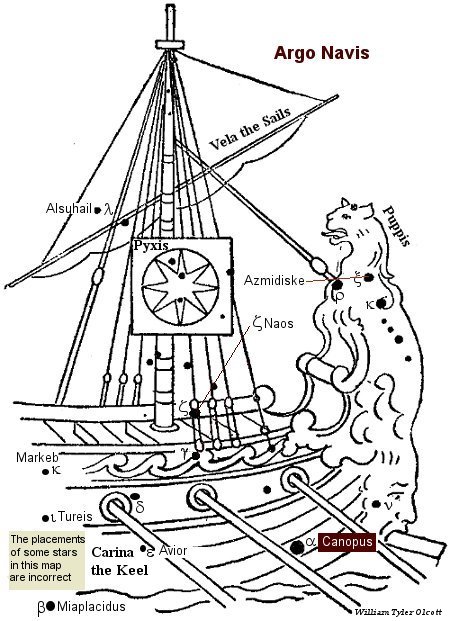 Alpha (α) Carina, Canopus, is a white binary star in the Keel of the ship Argo Navis, the brightest star in the constellation of Argo Navis, the Great Ship, and the second biggest star in the sky; after Sirius which it closely aligns with by longitude (Canopus is now, in 2008, 15Cancer05 and Sirius 14Cancer12, but they are separated by 36 degrees in ecliptic latitude). Alpha (α) Carina, Canopus, is a white binary star in the Keel of the ship Argo Navis, the brightest star in the constellation of Argo Navis, the Great Ship, and the second biggest star in the sky; after Sirius which it closely aligns with by longitude (Canopus is now, in 2008, 15Cancer05 and Sirius 14Cancer12, but they are separated by 36 degrees in ecliptic latitude).
Canopus is not visible to anyone living above latitude 37 degrees north of the northern hemisphere.
The Greeks called it Kanobos, and Kanopus, transcribed into Canobus and now it universally is Canopus.
The Greek astronomer Aratus, circa 270 B.C., Eudoxos, and Hipparchos also, designated it as Pedalion; the Rudder, and Cicero's Gubernaculum.
Our name for it is that of the chief pilot (named Canopus) of the fleet of Menelaos (Menelaus, a king of Ancient Sparta), who, on his return from the destruction of Troy, 1183 B.C., touched at Egypt, where, twelve miles to the northeastward from Alexandria, Canopus died and was honored, according to Scylax, by a monument raised by his grateful master (Menelaos), giving his name to the city and to this splendid star, which at that time rose about 7½° above that horizon. (Ancient Canopus is now in ruins, but its site is occupied by the village of Al Bekur, or Aboukir, famous from Lord Nelson's Battle of the Nile, August I, 1798, and from Napoleon's victory over the Turks a year afterwards; and it is interesting to remember that it was here, from the terraced walls of the Serapeum, the temple of Serapis, that the second-century Greek astronomer Ptolemy made his observations. Serapis was the title of the great Osiris of Egypt as god of the lower world; his incarnation as god of the upper world being in the bull Apis.)
The foregoing derivation of the word Canopus is an early and popular one; but another, perhaps as old, and more probable, being on the authority of Aristides, is from the Coptic people of Egypt, or Egyptian, Kahi Nub, Golden Earth. Ideler, coinciding in this, claimed these words as also the source of other titles for Canopus, the Arabic Wazn, Weight, and Hadar, Ground; and of the occasional later Ponderosus and Terrestris. Although I find no reason assigned for the appropriateness of these names, it is easy to infer that they may come from the magnitude of the star and its nearness to the horizon; this last certainly made it the (Greek) perigelos (perigee) of Eratosthenes.
Similarly the universal Arabic title was Suhail, written by Western nations Suhel, Suhil, Suhilon, Sohayl, Sohel, Sohil, and Soheil, Sahil, Sihel, and Sihil; all taken, according to Buttmann, from Al Sahl, the Plain. Suhel ponderosus, Subhel.
This word also was a personal title in Arabia, and, Delitzsch says, the symbol of what is brilliant, glorious, and beautiful, and even now among the nomads is thus applied to a handsome person.
Among the Persians Suhail is a synonym of wisdom, seen in the well-known Al Anwar i Suhaili, the "Lights of Canopus".
The seventeenth century French astronomer Bullialdus in his Astronomia Philolaica, it was transcribed Soail Iamane (Yamane). This was from the Arabs' Al Suhail al Yamaniyyah, the Suhail of the South, or perhaps an allusion to the old story, told in connection with our Procyon, that Suhail (Canopus), formerly located near Orion's stars, the feminine Al Jauzah, had to flee to the south after his marriage to her, where he still remains. Others said that Suhail (Canopus) only went a-wooing of Al Jauzah (Orion), who not only refused him, but very unceremoniously kicked him to the southern heavens.
Another occasional early title was Al Fahl, the Camel Stallion. Allusions to it in every age indicate that everywhere it was an important star, especially on the Desert. There it was a great favorite, giving rise to many of the proverbs of the Arabs, their stories and superstitions, and supposed to impart the much prized color to their precious stones, and immunity from disease. Its heliacal rising, even now used in computing their year, ripened their fruits, ended the hot term of the summer, and set the time for the weaning of their young camels.
{p.70} Moore wrote of it in Lalla Rookh :
"The Star of Egypt, whose proud light, Never hath beam'd on those who rest In the White Islands of the West;"
again alluding to it, in the same poem, as the cause of the unfailing cheerfulness of the Zingians (the inhabitants of Zinge, a large village forty miles northeast of Mosul, in Kurdistan). And, as the constellation (Argo Navis) was associated on the Nile with the great god Osiris, so its great star became the Star of Osiris; but, later on, Capella and the scholiast on Germanicus called it Ptolemaeon and Ptolemaeus, in honor of Egypt's great king Ptolemy Lagos; and at times it has been Subilon, but the appropriateness of this I have been unable to verify. The (Greek) Sampilos, cited by the 17th century English orientalist Thomas Hyde as from Kircher, and so presumably Coptic people of Egypt, is equally unintelligible.
While all this knowledge of Canopus is ancient, it seems "but of yesterday" when we consider the star's history in worship on the Nile. Lockyer tells us of a series of temples at Edfu, Philae, Amada, and Semneh, so oriented at their erection, 6400 B.C., as to show Canopus heralding the sunrise at the autumnal equinox, when it was known as the symbol of Khons, or Khonsu, the first southern star-god; and of other similar temples later. At least two of the great structures at Karnak, of 2100 and 1700 B.C., respectively, pointed to its setting; as did another at Naga, and the temple of Khons at Thebes, built by Rameses III about 1300 B.C., afterwards restored and [p.71] enlarged under the Ptolemies. It thus probably was the prominent object in the religion of Southern Egypt, where it represented the god of the waters.
The Hindus called it Agastya, one of their Rishis, or inspired sages,— and helmsman of their Argha,— a son of Varuna, the goddess of the waters; and Sanskrit literature has many allusions to its heliacal rising in connection with certain religious ceremonies. In the Avesta it is mentioned as "pushing the waters forward"—governing the tides(?).
In China it was Laou Jin, the Old Man, and an object of worship down to at least 100 B.C.
Since the 6th century it has been the Star of Saint Catharine, appearing to the Greek and Russian pilgrim devotees as they approached her convent and shrine at Sinai, on their way from Gaza, their landing-place.
In early German astronomical books it was the Schif-stern, or Ship-star.
With Achernar and Fomalhaut, corresponding stars in Eridanus and Piscis Australis, it made up the Tre Facelle of Dante's Purgatorio, symbolizing Faith, Hope, and Charity,—
"those three torches, With which this hither pole is all on fire."
Hipparchos was wont to observe it from Rhodes in latitude 36° 30'; and, even before him, Posidonius of Alexandria, about the middle of the 3d century before Christ, utilized it in his attempt to measure a degree on the earth's surface on the line between that city and Rhodes, making his [p.72] observations from the old watch-tower of Eudoxos at Cnidos in the Asian Caria,— possibly the earliest attempt at geodetic measurement, as this observatory was the first one mentioned in classical days. Manilius poetically followed in his path by using it, with the Bear (Ursa Major), to prove the sphericity of the earth.
[Star Names, Their Lore and Meaning, Richard Hinckley Allen, 1889].
The astrological influences of the constellation Carina
No myths or astrological interpretations are associated with the constellation Carina because this constellation had always been seen as part of the constellation Argo Navis, the Great Ship, until French astronomer Nicolas Louis de Lacaille in 1752 subdivided Argo Navis into Carina (the keel of the ship), Puppis (the poop), and Vela (the sails), plus a subordinate division of Argo now called Pyxis Nautica. The constellation Argo Navis represents the ship in which Jason brought the Golden Fleece from Colchis, said to be the first ship ever built.
The astrological influences for the whole constellation of Argo Navis, the Great Ship: According to Ptolemy the bright stars are like Saturn and Jupiter. Argo is said to give prosperity in trade and voyages, and strength of mind and spirit, but it has been observed to accompany cases of drowning, a notable instance being furnished by the horoscope of Shelley, where Argo occupied the 8th house and contained the Sun, Venus and Uranus. Drowning is particularly to be feared when Saturn afflicts the Moon in or from Argo. It is probably on account of this constellation that Virgo, especially the first decanate, is frequently found to be connected with drowning. [Robson*, p.30.]
The astrological influences of the star Canopus
Notes: A white star in one of the oars of the ship Argo. Named in honor of Canopus, the chief pilot of the fleet of Menelaus, who was killed in Egypt by the bite of a serpent on his return from the destruction of Troy. [Robson*, p.150.]
According to Ptolemy it is of the nature of Saturn and Jupiter; and, to Alvidas, of the Moon and Mars. It gives piety, conservatism, a wide and comprehensive knowledge, voyages and educational work, and changes evil to good. [Robson*, p.150.]
Canopus has been noted several times in the nativities of writers and film actors and especially of those persons who, in our times, have had to undertake many journeys in connection with their position. [Fixed Stars and Their Interpretation, Elsbeth Ebertin, 1928, p.39.]
If Rising: Canopus on the Ascendant is supposed to give a love of travel and also to instigate fights and quarrels resulting in lawsuits; the native however can channel these tendencies constructively, with astuteness and a sense of real earnestness. [Fixed Stars and Their Interpretation, Elsbeth Ebertin, 1928, p.39.]
If culminating: Great glory, fame and wealth, dignity and authority by the help of an old clergy man or influential person. [Robson*, p.150.]
With Sun: Domestic affliction, trouble with father or parents, financial loss, danger of accidents, burns and fevers, unfavorable end to life. [Robson*, p.150.]
With Moon: Success in martial matters as a soldier, metal worker, etc. [Robson*, p.150.]
With Mercury: Rash, headstrong, stubborn, kindhearted, speaker or writer on unpopular subjects incurring criticism; trouble and loss through domestic matters, partners and law. [Robson*, p.150.]
With Venus: Emotional, sensitive, stubborn, strong passions, scandal through an intrigue by which reputation will suffer, public disgrace, bad for gain. [Robson*, p.150.]
With Mars: Cruel, bad-tempered, envious, jealous. [Robson*, p.150.]
With Jupiter: Great pride, religion used for business ends, voyages, honor and preferment but reversal through public dissatisfaction. [Robson*, p.151.]
With Saturn: Discontented, occult interests, unfavorable for reputation and domestic matters, little prominence but may do good. [Robson*, p.151.]
With Uranus: Materialistic, dishonorable, many difficulties, easily influenced, estranged from relatives and friends, trouble through enemies and opposite sex, domestic disharmony, violent and possibly public death. [Robson*, p.151.]
With Neptune: Aggressive, materialistic, strong mind and body, loss through quarrels, speculation and friends, ideas or inventions often stolen, peculiar events throughout life, unexpected losses and gains, disharmony with father in earlier life, liable to accidents, sudden death. [Robson*, p.151.]
|
|
|
0 Reseñashttp://books.google.com.ar/books/about/The_Canopus_Revelation.html?hl=es&id=nlIQUsY0LXoC
Adventures Unlimited Press, 2004 - 212 páginas
A radical reinterpretation of the myth of Osiris and Isis. Humankind has misidentified the constellation Orion with the Egyptian god Osiris in Egyptian mythology. Rather, it is the star Canopus that is linked with Osiris, as identified by both ancient writers and early 20th century scholars. Canopus, for Egypt the South polar star, is the second-brightest star and interplays with Sirius in such a way that ancient accounts surmised that the two stars controlled time. It was the navigators star, allowing access to the afterlife: the domain of Osiris. Canopus was specifically identified with Osirus' Ark, where he was transformed from mere mortal to resurrected supergod. Canopus was therefore literally a stargate, where men could communicate with and aspire to become gods -- and enter into other dimensions. This book will reveal what the Egyptians actually believed about: what happened to the soul after death; how they coded this knowledge into their mythology; how ancient accounts and modern physics use the same symbolism to describe the structure of the universe, the playground of the Egyptian gods and the souls of the deceased; ... and how the Canopus myth is linked to the Grail legend and to alchemy, revealed here for the first time.
|
|
|
|
|
|
|
EL NEXO HORUS, EN EL CONTEXTO A LA RESURRECCION DEL SEÑOR, ES OBVIO UNA REFERENCIA A LA KAABA ISLAMICA Y A LA ESTRELLA CANOPUS. EL TEMPLO DE HORUS EN EDFU, ESTABA ORIENTADO HACIA DICHA ESTRELLA, QUE APARENTEMENTE TIENE UN NEXO CON EL ARCA DE NOE. HORUS, TIENE UN FUERTE NEXO EN ESE CONTEXTO CON REFERENCIA AL ORIGEN DE LA HORA, EN EL MARCO A DICHA RESURRECCION.
|
|
|
|
|
Argo Navis
Jason's Ship
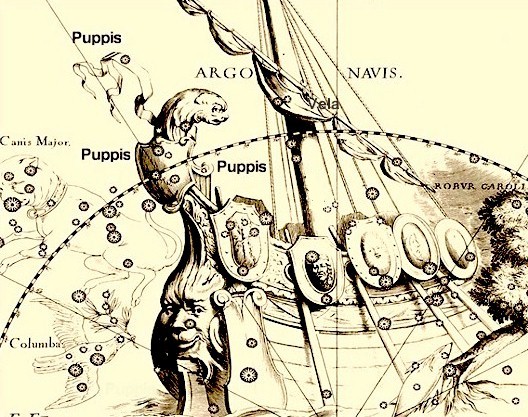 Hevelius, Firmamentum, 1690. The Ship is said to be moving stern-forward
"Then famed Argo, raised to the skies from the sea which it was the first to cross, occupies the heaven it earned through grievous perils in a bygone age, made a god for having given safety to gods" [Manilius, Astronomica, book 1, p.37].
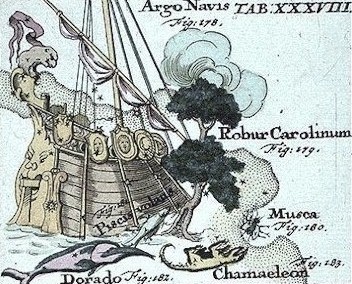 Johann Rost, Atlas portatalis coelestis, 1723 1 Johann Rost, Atlas portatalis coelestis, 1723 1Argo Navis is no longer an officially recognized constellation, it has been split up into three constellations; Carina the Keel, Vela the Sails, Puppis the Stern, plus a subordinate division of Argo now called Pyxis Nautica, the Nautical Box or Mariner's Compass, and which used to be called Malus, the Mast. In Greek Mythology Argo Navis represents the Ship used by Jason and fifty Argonauts to sail to fetch the Golden Fleece from Colchis (Iolcus) in the Black Sea. The Argo was built by the shipwright Argos or Argus. It was built at the port of Pagasae, using timber from nearby Mount Pelion.
Most of what we know about the Argo comes from the Greek poet Apollonius Rhodius, 3rd century B.C. from his epic poem, The Argonautica, a translation of which can be read online: http://omacl.org/Argonautica/
"Ancient authors were divided about the origin of the name of the ship. Some ascribed it to the name of the person who built it, Argus, son of Phrixus; others to the Greek word argos, 'swift', as being a light sailor; others to the city of Argos, where they suppose it was built; yet others to the Argives, who went on board it, according to the distich quoted from ancient Roman statesman Cicero, in his first Tusculan" [1].
The -naut of argonaut and the Navis of Argo Navis come from the same indo-European root *náu- 'Boat or ship'. Derivatives: naval, nave¹ (from Latin navis), navicular bone (also called scaphoid; shaped like a boat), navigate, navy, navy, nausea, nautical, noise, aeronaut, aquanaut, Argonaut, astronaut, cosmonaut, from Greek naus, ship, and nautes, sailor. [Pokorny 1. naus- 755. Watkins] The color navy derived from the navy uniforms worn in the navy. [These words are not related to the word 'navel' meaning umbilicus.]
Argo has been identified with a number of arks (the word 'ark' might also relate to the constellation Ara?):
"Egyptian story said that it was the ark that bore Isis and Osiris over the Deluge; while the Hindus thought that it performed the same office for their equivalent Isi and Iswara. And their prehistoric tradition made it the ship Argha for their wandering sun, steered by Agastya, the alpha star of Carina, Canopus. In this Sanskrit argha we perhaps may see our title" [Star Names].
Canopus is the alpha star of Carina. Plutarch says:
"Moreover, they give to Osiris the title of general, and the title of pilot to Canopus, from whom they say that the star derives its name; also that the vessel which the Greeks call Argo, in form like the ship of Osiris, has been set among the constellations in his honour, and its course lies not far from that of Orion and the Dog-star; of these the Egyptians believe that one is sacred to Horus and the other to Isis." [Plutarch, Moralia]
Christian legend identifies the constellation as Noah's Ark:
"The biblical school of course called it Noah’s Ark, the Arca Noachi, or Archa Noae as Bayer wrote it; Jacob Bryant, the English mythologist of the last century, making its story another form of that of Noah. Indeed in the 17th century the Ark seems to have been its popular title" [Star Names].
Nature gives hints on how to build a ship:
"Learn of the little nautilus to sail, Spread the thin oar, and catch the driving gale. [Line 177, An Essay on Man, a poem by Alexander Pope, 1733.]
The argonauts (genus Argonauta, the only extant genus in the Argonautidae family) are a group of pelagic octopuses, the Nautilus, Argonaut, or sailor-fish, a shell-fish found in the Mediterranean and in the Indian Ocean, and usually at the bottom of the sea, yet is able to rise to the surface, which it is fond of doing in calm weather. The shell is so thin that it is called the paper Nautilus. It lies on its back floating on the water. It employs some of its arms as oars to make progress, but if a gentle breeze arises it raises two of them upright, and extending them, spreads the membrane between them into a sail, which catches the wind ; its other arms hang out as a rudder to steer it the way it wishes [Significant etymology]. Female argonauts produce a laterally-compressed calcareous eggcase in which they reside. This "shell" has a double keel fringed by two rows of alternating tubercles.
The astrological influences of the constellation given by Manilius:
"Lord of the flock and conqueror of the sea, to which, a horn lost and robbed even of its fleece, it gave its burden [Helle] and a name, the Ram [Aries], which bade the magic arts of Colchian Medea (who married Jason) journey to Iolcos (Colchis) and spread her poisons throughout the world, even now draws Argo by the poop to its side, as though still on the seas, through the stars on its right [translator's note: An error: Argo is a southern constellation and rises to the left of the zodiac, but never contemporaneously with Aries]. But the foremost part of the poop emerges to show its fires only when the Ram has brought four degrees of his countenance above the horizon.
"Whoever is born on earth at the rising of Argo will be the captain of a ship; holding fast to his helm, he will forsake dry land for the sea and pursue his fortune with the winds; he will crave to traverse the entire ocean with his fleet, visit foreign climes and the deep Phasis, and better the speed of Tiphys towards the rocks (the Symplegades). Take away the births of men situated beneath this constellation, and you will take away the Trojan war and the fleet which both set sail and made land fall with bloodshed (of Iphigenia and Erotenlaus); then will no Xerxes launch Persia on the main or open up a new sea (by cutting a canal through Athos) and cover over the old (by the vastness of his fleet, some interpreters see an allusion to the bridging of the Hellespont, but Housman considers this unlikely); no reversal of Salamis at Syracuse will overwhelm Athens, nor will Punic prows ride every sea, the world within Actium's bays hang in the balance between opposing forces, and heaven's destiny float at the mercy of the waves. Men born under Argo are the guides who guide our ships over the trackless deep; it is through them that land meets land and the whole world's wares are summoned with the winds to supply men's divers needs". [Manilius, Astronomica, book 5, p.303].
© Anne Wright 2008.
| In 1763 the French cartographer De Lacaille divided the larger constellation of Argo Navis into its constituent sections, Carina, Puppis, Pyxis, and Vela. |
| Fixed stars in Carina the Keel |
| Star |
1900 |
2000 |
R A |
Decl 2000 |
Lat |
Mag |
Sp |
| Canopus alpha (α) |
13CAN35 |
14CAN58 |
6h 23m 57.1s |
-52° 41' 45" |
-75 49 50 |
-0.70 |
F0 |
| chi (χ) |
29LEO22 |
00VIR45 |
7h 56m 46.7s |
-52° 58' 56" |
-70 19 46 |
3.60 |
B3 |
| Avior epsilon (ε) |
21VIR47 |
23VIR08 |
8h 22m 30.8s |
-59° 30' 35" |
-72 40 48 |
1.74 |
K0 |
| Tureis iota (ι) |
03LIB58 |
05LIB20 |
9h 17m 5.4s |
-59° 16' 31" |
-67 36 02 |
2.25 |
F0 |
| Foramen eta (η) |
20LIB47 |
22LIB09 |
10h 45m 3.6s |
-59° 41' 3" |
-58 55 09 |
1.90 var |
P |
| upsilon (υ) |
21LIB31 |
22LIB54 |
9h 47m 6.1s |
-65° 4' 19" |
-67 29 43 |
3.15 |
F0 |
| Miaplacidus beta (β) |
00SCO37 |
01SCO58 |
9h 13m 12s |
-69° 43' 2" |
-72 13 48 |
1.80 |
A0 |
| omega (ω) |
06SCO04 |
07SCO27 |
10h 13m 44.2s |
-70° 2' 17" |
-67 22 39 |
3.56 |
B8 |
| Fixed stars in Puppis the Stern |
| Star |
1900 |
2000 |
R A |
Decl 2000 |
Lat |
Mag |
Sp |
| nu (ν) |
15CAN46 |
17CAN09 |
6h 37m 45.7s |
-43° 11' 46" |
-66 04 49 |
3.18 |
B8 |
| tau (τ) |
26CAN21 |
27CAN44 |
6h 49m 56.2s |
-50° 36' 53" |
-72 51 29 |
2.83 |
G8 |
| pi (π) |
28CAN56 |
00GEM19 |
7h 17m 8.6s |
-37° 5' 51" |
-58 31 49 |
2.74 |
K5 |
| L (L1) |
02LEO03 |
03LEO26 |
7h 13m 13.4s |
-45° 10' 59" |
-65 58 08 |
var |
M5 |
| Azmidiske xi (ξ) |
04LEO39 |
06LEO02 |
7h 49m 17.7s |
-24° 51' 35" |
-44 56 40 |
3.47 |
G6 |
| sigma (σ) |
07LEO19 |
08LEO42 |
7h 29m 13.8s |
-43° 18' 5" |
-63 46 54 |
3.27 |
M0 |
| rho (ρ) (15 Puppis) |
10LEO01 |
11LEO24 |
8h 7m 32.6s |
-24° 18' 15" |
-43 16 29 |
2.88 |
F5 |
| Naos zeta (ζ) |
17LEO10 |
18LEO33 |
8h 3m 35.1s |
-40° 0' 12" |
-58 21 06 |
2.27 |
O5 |
| Fixed stars in Pyxis the Mariner's Compass |
| Star |
1900 |
2000 |
R A |
Decl 2000 |
Lat |
Mag |
Sp |
| gamma (γ) |
24LEO06 |
25LEO29 |
8h 50m 31.9s |
-27° 42' 36" |
-43 17 42 |
4.19 |
K4 |
| alpha (α) |
25LEO08 |
26LEO31 |
8h 43m 35.5s |
-33° 11' 11" |
-48 55 34 |
3.70 |
B1 |
| beta (β) |
25LEO26 |
26LEO49 |
8h 40m 6.2s |
-35° 18' 30" |
-51 09 30 |
4.04 |
G5 |
| Fixed stars in Vela the sail |
| Star |
1900 |
2000 |
R A |
Decl 2000 |
Lat |
Mag |
Sp |
| gamma (γ) |
25LEO59 |
27LEO22 |
8h 9m 32s |
-47° 20' 12" |
-64 28 44 |
1.70 var |
B3 |
| Alsuhail lambda (λ) |
09VIR49 |
11VIR11 |
9h 7m 59.8s |
-43° 25' 57" |
-55 52 21 |
2.22 |
K4 |
| psi (ψ) |
13VIR22 |
14VIR45 |
9h 30m 42s |
-40° 28' 0" |
-51 09 53 |
3.64 |
A7 |
| delta (δ) |
17VIR35 |
18VIR58 |
8h 44m 42.2s |
-54° 42' 30" |
-67 11 51 |
2.01 |
A0 |
| q |
25VIR37 |
27VIR00 |
10h 14m 44.2s |
-42° 7' 19" |
-48 15 31 |
4.09 |
A2 |
| Markeb kappa (κ) |
27VIR31 |
28VIR54 |
9h 22m 6.8s |
-55° 0' 39" |
-63 43 16 |
2.63 |
B3 |
| phi (φ) |
04LIB35 |
05LIB58 |
9h 56m 51.8s |
-54° 34' 4" |
-59 56 56 |
3.70 |
B7 |
| mu (μ) |
09LIB08 |
10LIB31 |
10h 46m 46.2s |
-49° 25' 12" |
-51 05 10 |
2.84 |
G5 |
 Urania's Mirror 1825 Urania's Mirror 1825
Argo Navis, the Ship Argo, generally plain Argo, — erroneously Argus, from confusion with its genitive case (Argus Panoptes, Argus "all eyes"), — and Navis, is the German Schiff, the French Navire Argo, and the Italian Nave Argo.
It lies entirely in the southern hemisphere, east of Canis Major, south of Monoceros and Hydra, largely in the Milky Way, showing above the horizon of New York city only a few of its unimportant stars; but it covers a great extent of sky, nearly seventy-five degrees in length, — Manilius calling it nobilis Argo, — and contains 829 naked-eye components. The centre culminates on the 1st of March.
La Caille used for it nearly 180 letters, many of them of course duplicated, so that although this notation was adopted in the British Association Catalogue, recent astronomers have subdivided the figure for convenience in reference, and now know its three divisions as Carina, the Keel, with 268 stars, Puppis, the Stern, with 313, and Vela, the Sail, with 248. This last is the German Segel.
La Caille, moreover, formed from stars in the early subordinate division Malus, the Mast, Pyxis Nautica, the Nautical Box or Mariner's Compass, the German See Compass, the French Boussole or Compas de Mer, and the Italian Bussola; and this is still recognized by some good astronomers as Pyxis.{Page 65} From other stars Bode formed Lochium Funis, his Logleine, our Log and Line, now entirely fallen into disuse.
The Ship appears to have no bow, thus presenting the same sectional character noticeable in Equuleus, Pegasus, and Taurus, and generally is so shown on the maps. It was in reference to this that Aratos wrote:
"Sternforward Argo by the Great Dog's tail
Is drawn; for hers is not a usual course,
But backward turned she comes, as vessels do
When sailors have transposed the crooked stern
On entering harbour; all the ship reverse,
And gliding backward on the beach it grounds.
Sternforward thus is Jason's Argo drawn.
This loss of its bow is said to have occurred when Argo
"pass'd Through Bosporus betwixt the justling rocks — "
the Symplegades, the Cyanean (azure), or the Planctae Rocks at the mouth of the Euxine Sea. Yet Aratos may have thought it complete, for he wrote: "All Argo stands aloft in sky," and
"Part moves dim and starless from the prow
Up to the mast, but all the rest is bright;"
and it has often been so illustrated and described by artists and authors. The Alfonsine Tables show it as a complete double-masted vessel with oars, and Lubienitzki, in the Theatrum Cometicum of 1667, as a three-masted argosy with a tier of ports and all sails set full to the wind.
Mythology insisted that it was built by Glaucus, or by Argos, for Jason, leader of the fifty Argonauts, whose number equaled that of the oars of the ship, aided by Pallas Athene, who herself set in the prow a piece from the speaking oak of Dodona; the Argo being "thus endowed with the power of warning and guiding the chieftains who form its crew." She carried the famous expedition from Colchis in Thessaly to Aea in Colchis, (Colchis was the district along the eastern shore of the Euxine Sea, now Mingrelia.] in search of the golden fleece, and when the voyage was over Athene placed the boat in the sky.
Another Greek tradition, according to Eratosthenes, asserted that our constellation represented the first ship to sail the ocean, which long before {Page 66} Jason's time carried Danaos with his fifty daughters from Egypt to Rhodes and Argos, and, as Dante wrote, "Startled Neptune with the aid of Argo."
Egyptian story said that it was the ark that bore Isis and Osiris over the Deluge; while the Hindus thought that it performed the same office for their equivalent Isi and Iswara. And their prehistoric tradition made it the ship Argha for their wandering sun, steered by Agastya, the star Canopus. In this Sanskrit argha we perhaps may see our title; but Lindsay derives Argo from arek, a Semitic word, used by the Phoenicians, signifying "long," this vessel having been the first large one launched.
Sir Isaac Newton devoted much attention to the famous craft, fixing the date of its building about 936 B.C., forty-two years after King Solomon.
With the Romans it always was Argo and Navis, Vitruvius writing Navis quae nominatur Argo: but Cicero called it Argolica Navis and Argolica Puppis; Germanicus, Argoa Puppis; Propertius, the elegiac poet of the 1st century before our era, Iasonia Carina; Ovid, Pagasaea Carina and Pagasaea Puppis, from the Thessalian seaport where it was built; Manilius, Ratis Heroum, the Heroes' Raft, "which now midst Stars doth sail"; and others, Navis Jasonis, or Osiridis, Celox Jasonis, Carina Argoa, Argo Ratis, and Navigium Praedatorium, the Pirate Ship. While somewhat similar are Currus Maris, the Sea Chariot, the Currus Volitans of Catullus, who said that in Egypt it had been the Vehiculum Lunae.
It also was Equus Neptunias; indeed Ptolemy asserted that it was known as a Horse by the inhabitants of Azania, the modern Ajan, on the northeastern coast of Africa, south of Cape Gardafui.
The Arabians called it Al Safinah, a Ship, and Markab, something to ride upon, that two or three centuries ago in Europe were transcribed Alsephina and Merkeb.
Grotius mentioned Cautel as a title for Puppis, "from the Tables," but he added Hoc quid sit nescio.
The biblical school of course called it Noah’s Ark, the Arca Noachi, or Archa Noae as Bayer wrote it; Jacob Bryant, the English mythologist of the last century, making its story another form of that of Noah. Indeed in the 17th century the Ark seems to have been its popular title.
In Hewitt's Essays we find a reference to "the four stars which marked the four quarters of the heavens in the Zendavesta, the four Loka-palas, or "nourishers of the world," of the Hindus; and that author claims these for {Page 67} Sirius in the east, the seven stars of the Greater Bear in the north, Corvus in the west, and Argo in the south. He gives the latter's title as Sata Vaesa, the One Hundred Creators; all these imagined as forming a great cross in the sky. The differing Persian conception of this appears in the remarks on Regulus, — alpha Leonis.
The Chinese asterism Tien Meaou probably was formed from some components of Argo.
The constellation is noticeable in lower latitudes not only from its great extent and the splendor of Canopus, but also from possessing the remarkable variable eta (eta Carina, Foramen) and its inclosing nebula.
Near the star s' Carinae appeared, between March 5 and April 8, 1895, a nova with a spectrum similar to those of the recent novae in Auriga and Norma.
. . . like a meadow which no scythe has shaven,
Which rain could never bend or whirl-blast shake,
With the Antarctic constellations paven,
Canopus and his crew, lay the Austral lake.
--Percy Bysshe Shelley's The Witch of Atlas.
[ Star Names: Their Lore and Meaning, Richard H. Allen, 1889.]
|
|
|
|
|
-
www.philipcoppens.com/canopus_art1.html
We know that Sirius is linked with Isis, but what is Canopus? ... Orion and the Dog
star; the former of these the Egyptians hold sacred to Horus, the latter to Isis.
-
www.philipcoppens.com/canopus_art6.html
The book argued that Canopus was the forgotten “star” of the Egyptian ... in “The
Canopus Revelation” is shown to be erroneous: Orion was linked with Horus, ...
-
es.wikipedia.org/wiki/Vaso_canopo
Para otros usos de este término, véase Canopus. Los cuatro ... a unas
divinidades llamadas Hijos de Horus, quienes protegían su contenido de la
destrucción.
-
en.wikipedia.org/wiki/Canopic_jar
... the mistaken association by early Egyptologists with the Greek legend of
Canopus. ... Hieroglyphs for the four sons of Horus used on an Egyptian canopic
jar.
-
books.google.com.ar/books?isbn=1602060843
Horus was said to duplicate or rise again as the White God. ... Another name of
this dual divinity is Sut-Nub, the original of Sothis-Canopus in the stellar phase ...
-
www.shmoop.com/sons-horus/bottle-brigade.html
The Four Sons of Horus aren't the only gods who live in jars or bottles. Their
containers, called canopic jars, are actually named for the Greek demigod
Canopus.
-
books.google.com.ar/books?isbn=1317654854
Ё} www Herz: tatu, Horus lands, i.e., temple estates, кип: R. 9, 21, 23, 46. ä i р ä)
ä E 113.911, singers, С. 34. à ì ii ä) Ё Iles-tu» praised, О. 34. [l l] Q2 in мы, ...
-
books.google.com.ar/books?isbn=1317654919
... was made “ready for war with weapons of every kind by 23 “the rebels who
were in it—now they had corn- emitted great acts of sacrilege in the land of “
Horus, ...
-
books.google.com.ar/books?isbn=1616405570
Horus was said to duplicate or rise again as the White God. ... Another name of
this dual divinity is Sut-Nub, the original of Sothis-Canopus in the stellar phase; ...
-
books.google.com.ar/books?id=HDVbAAAAcAAJ
CANOPUS. 409] NICOLO. In France. Canopus in front ; the hend of Isis
decorated' with the lotus and two serpents on the forehead. NVater seems to run
from the ...
-
Anunciowww.urbix.com.ar/
Sepa como el movimiento peatonal Impacta sobre su Negocio
|
|
|
|
|
Canopus (estrella)
De Wikipedia, la enciclopedia libre
Para otros usos de este término, véase Canopus. Canopus o Canopo es el nombre de la estrella Alfa Carinae (α Car). Con magnitud aparente -0,72, es la más brillante de la constelación de Carina («La Quilla») y la segunda más brillante del cielo nocturno tras Sirio (α Canis Majoris), cuya magnitud es -1,47. Aunque se trata de una estrella del hemisferio celeste Sur profundo, puede observarse incluso desde la costa africana del Mar Mediterráneo. Es circumpolar al sur de latitud 38° S, en ciudades como Bahía Blanca (Argentina) y Valdivia (Chile).
De acuerdo con la obra de Richard Hinckley Allen «Star Names: Their Lore and Meaning»,[3] el nombre Canopus tiene dos orígenes posibles. El primero proviene de las leyendas de la guerra de Troya, ya que la constelación de Carina formaba parte en la antigüedad de la gigantesca constelación Argo Navis («El Navío Argos»), es decir, el barco utilizado por Jasón y los Argonautas; la estrella más brillante de la constelación recibió el nombre del piloto del barco de Menelao, Canopus. El segundo origen del nombre proviene del idioma copto, hablado en Egipto; Kahi Nub («Tierra dorada»), haría referencia al color de la estrella vista sobre el horizonte desde este país, enrojecido por la extinción atmosférica.
En la antigua astrología hindú, la estrella es conocida como Agastya, uno de los rishi —sabios míticos—, hijo de los dioses Varuna y Mitra.
[editar] Características físicas
La distancia a la que se halla Canopus fue objeto de discusión hasta que fue medida con precisión por el satélite Hipparcos a partir de su paralaje, resultando en 309 años luz. Con una luminosidad 13.300 veces la de nuestro Sol, es la estrella de mayor brillo intrínseco en un radio de 700 años luz del Sistema Solar. Es, por ejemplo, mucho más luminosa que Sirio, cuya luminosidad equivale únicamente a unas 22 veces la del Sol.
Canopus es una gigante luminosa o supergigante blanco-amarilla de tipo espectral F0II con una temperatura superficial de 7280 K. Las supergigantes de tipo F como Canopus son escasas y mal conocidas; pueden ser estrellas en proceso de evolucionar hacia la etapa de gigante roja o, por el contrario, podrían estar «regresando» desde dicha fase. Lo más probable es que Canopus se halle en esta última situación, fusionando helio en carbono y oxígeno en su núcleo. Su radio es 71 veces más grande que el radio solar; situada en el lugar del Sol, se extendería hasta 9/10 partes de la órbita de Mercurio. Tiene una corona muy caliente, diez veces más caliente que la del Sol, observable tanto en rayos X como en ondas de radio. Con una masa de 8 o 9 masas solares, Canopus se encuentra en el límite entre las estrellas de masa intermedia y las masivas; su masa no es, por lo tanto, suficiente para que acabe explotando como supernova y concluirá sus días como una enana blanca compuesta por neón y oxígeno y no, como la mayor parte de estos remanentes estelares, por carbono y oxígeno.
Debido a su posición fuera del plano de la eclíptica —al contrario que Sirio— y a su brillo, Canopus es una estrella utilizada a menudo por las sondas espaciales para orientar su posición.
http://es.wikipedia.org/wiki/Canopus_(estrella)
|
|
|
www.youtube.com/watch?v=lniF9vQ5eNg
22/05/2012 - Subido por alex welch
Canopus from Earth - 10 Nov 2011 UFO Orb Planet X Nibiru Comet Blue Star Kachinaby Alicia5D 611 views ...
|
|
|
|
|
|
|

|
 Canopus and the rest of the southern sky seen at 8:30 p.m. local time on Feb. 18 from Los Angeles. Canopus and the rest of the southern sky seen at 8:30 p.m. local time on Feb. 18 from Los Angeles.
CREDIT: |
At around 8:30 in the evening this week, anyone who looks skyward will see mighty Orion dominating the southern sky, having just crossed the meridian on his nightly journey westward.
Also in this part of the sky are the two brightest-appearing stars in the night sky, Sirius and Canopus, themselves soon to cross the meridian. We highlighted Sirius - the brightest of all the stars - just a couple of weeks ago. This dazzling blue-white diamond has the distinction of being visible from every well-populated region on Earth.
In contrast, the star second only to Sirius in brilliance, Canopus (magnitude -0.62), is only visible for those south of latitude 37.9 degrees north - a parallel passing close to San Francisco, California; Wichita, Kansas; and Richmond, Virginia. Wrote Robert Burnham (1931-1993) in his classic Celestial Handbook:
"Canopus is the Great Star of the South - a name and a legend only to many North American observers, but a dazzling gem to our more fortunately situated neighbors to the south."
Canopus is located in the southern constellation of Carina, the Keel of the now defunct constellation of Argo Navis, the Great Ship of Jason and the Argonauts. Canopus lies roughly due south of Sirius, so when the latter is at its highest, so too is Canopus. In fact, Canopus arrives at the meridian about 20 minutes before Sirius.
When Sirius reaches its highest point in the south, Canopus shines about 40 degrees below it; unfortunately out of sight for Europe, Canada and the northern half of the United States.
Appearing to skim just above the southern horizon from most of the southern United States, it usually is immersed in thick horizon haze which is probably the main reason for the popular misconception that it's a deep yellow or even orange in color; its true tint is a silvery white.
So it is that latitude 37.9 degrees north marks the northernmost limit for getting just a brief view of Canopus, presupposing that you have access to a perfectly flat southern horizon, with absolutely no obstructions and can thus take full advantage of the "lifting effect" of atmospheric refraction.
Interestingly, there is a sneaky way to get a view of Canopus even farther to the north. Because the horizon appears to "dip" at altitudes of 30,000-feet or more, airline passengers might be able to glimpse this star peeking just above the horizon possibly from latitudes as far north as Washington, D.C., or St. Louis, Missouri.
Passengers on board commercial airliners incidentally, also have an advantage of flying above the thick haze and murk of our atmosphere. I still vividly remember my very first airline flight, at the age of 10, occurring on a mid-August night. My face was pressed against the window looking out at a truly splendid view of a dark, starry sky, occasionally punctuated by the bright streak of a Perseid meteor.
Even today I'll avail myself of such opportunities to do aerial stargazing, however, I usually have to place either a blanket or my suit jacket over my head, much like an old-time photographer's focusing cloth to block the interior cabin lights and their window reflections. In this post 9-11 era, I also have to make sure to explain to those seated around me, as well as to the cabin attendants what I'm doing. After all, a person seated on a commercial aircraft with his head covered by a blanket is no doubt apt to arouse some strange looks!
Getting back to Canopus, its location, roughly 15-degrees from the south pole of the ecliptic has given it an important space-age role. Many of the space probes that have been sent out into deep space have carried an optical Canopus sensor to stabilize the craft in the direction perpendicular to its orbit, which is close to the ecliptic plane. Other celestial bodies as the Sun and Earth are similarly used for stabilizing such vehicles in other directions during their long flight.
A long-standing controversy regarding Canopus has been its distance. Were you to check a variety of astronomy books published over the last 30 or 40 years, you'll likely encounter a surprising range of distances for this star, anywhere from less than 100 light years to more than 600. So why all the discrepancy?
One major factor is that for many years Canopus was always unavailable to the great observatories of the Northern Hemisphere, so it really wasn't adequately observed until large observatories began to spring up in the tropics and Southern Hemisphere. At one time Canopus was thought to be one of the most luminous of all known stars, with figures of up to 60,000 times that of the Sun being quoted.
More recent observations do not support such a large estimate. But make no mistake about it; Canopus is indeed a very large and brilliant star. Based on the latest data obtained from the HIPPARCOS satellite, we know today that Canopus is 313 light years away and has a computed luminosity of at least 12,000 times that of our Sun.
Basic Sky Guides
- Full Moon Fever
- Astrophotography 101
- Sky Calendar & Moon Phases
- 10 Steps to Rewarding Stargazing
- Understanding the Ecliptic and the Zodiac
- False Dawn: All about the Zodiacal Light
- Reading Weather in the Sun, Moon and Stars
- How and Why the Night Sky Changes with the Seasons
- Night Sky Main Page: More Skywatching News & Features
|
|
|
|
|
|
Según un astrónomo español, los principales monumentos de Petra, la legendaria ciudad de los nabateos en Jordania, tienen la misma orientación astronómica que la Kaaba, el lugar sagrado más importante del islam, en La Meca.
Juan Antonio Belmonte, un investigador del Instituto de Astrofísica de Canarias que se dedica a la disciplina astroarqueología, sostiene que las construcciones más importantes de Petra están orientadas hacia el solsticio de invierno y hacia Canopus, la estrella que guiaba a las caravanas por la península Arábiga. Los magníficos templos, edificios públicos y tumbas han sido esculpidos directamente en la roca, y declarados Patrimonio de la Humanidad por la UNESCO.
Petra se encuentra en un valle semidesértico, habitado por pueblos nómades hasta la llegada de los nabateos, probablemente en el siglo VI a.C. Una tribu árabe que fundó un imperio desde el mar Rojo hasta Damasco, y desde Gaza hasta los desiertos de Arabia Central. Los nabateos lograron armar un sistema de recolección y redistribución de agua, en una zona donde apenas llueve 150 milímetros al año. La ciudad alcanzó su apogeo alrededor del año 50 d.C., gracias al comercio generado por la ruta del incienso. De esa época –cuando llegó a tener al menos 20.000 habitantes– datan las construcciones más sorprendentes, talladas en la roca arenisca.
Petra siguió prosperando bajo el dominio romano y bizantino hasta el año 363, cuando sufrió un terremoto. Logró recuperarse, pero en 551, un segundo sismo le dio el golpe de gracia. Sus ruinas fueron descubiertas en 1812.
El astrónomo Belmonte midió los monumentos y, tras analizar los datos, descubrió que la astronomía y la topografía "sagrada" eran muy importantes para orientar su ubicación y estructura. Según Belmonte, el Monasterio "mira" hacia la puesta de Sol en el solsticio de invierno, un momento clave del ciclo vital. Se cree que el Monasterio, excavado en lo alto de una montaña, podría estar dedicado al rey Obodas o a Dushara, un dios lunar al que también se asociaba con el Sol; además, el solsticio de invierno se relacionaba con el nacimiento de esta divinidad. Otro de los grandes monumentos, El Tesoro, tiene igual orientación.
El astrónomo detectó que además, ambas construcciones tienen la misma orientación astronómica que la Kaaba, antes de que fuera islamizada y convertida en el principal centro de peregrinación de los musulmanes, cuando era un santuario donde se creía que había unos 360 ídolos, destruidos por el profeta Mahoma tras conquistar La Meca.
Otro templo, el de los Leones Alados, está orientado hacia Canopus, la segunda estrella más brillante del cielo que, al marcar el sur con cierta precisión, era utilizada por las caravanas para guiarse desde Petra hacia La Meca, y desde allí hacia las regiones del incienso. Según Belmonte, los dos obeliscos de más de seis metros han sido cincelados en la montaña en dirección este-oeste, de manera que al amanecer y al atardecer, y en el equinoccio, ambos están perfectamente alineados y sus sombras se tocan. El astrónomo destaca que fueron construidos en una época en la que los calendarios se regían por el equinoccio: marcaba el principio de los meses.
"Los grandes constructores del pasado, los que erigieron maravillas como Stonehenge, las pirámides de Egipto, la Kaaba o Petra, han buscado demarcar sus cimientos con la arquitectura de los cielos –señaló a Clarín el astrónomo argentino Roberto Venero–. Alinear un edificio con la posición del Sol en determinada época del año, o con la dirección de estrellas guía, es un modo de anclar nuestras supremas obras terrenas a la eternidad del cielo".
|
|
|
|
|

Diluvio de Noé
La leyenda del Diluvio de Noé comienza en Acuario durante la era astrológica de Tauro, y sigue la trayectoria del sol a través de la eclíptica de Acuario a Piscis a Aries a Tauro a Géminis. Para mayor referencia, véase el Edén para Babel y un mapa de la Zodiac .
Primera Imagen
Noé personifica Acuario del Waterman.
9 Estas son las generaciones de Noé. Noé era un hombre justo y honrado en su generación; Noé caminó con Dios. (Génesis 6: 9)
Los animales entraron en el arca de dos en dos.
9 de dos en dos, macho y hembra, entró en el arca con Noé, como mandó Dios a Noé. (Génesis 7: 9)
Cuando el sol pasa a Aries, la tierra estaba seca. El cordero simboliza la tierra.
14 En el mes segundo, a los veintisiete días del mes, se secó la tierra. (Génesis 8: 13-14)

Segunda imagen
El Argo Navis es una gran constelación de tal manera que se dividió en tres constelaciones: Carina, Puppis y Vela, en representación de la quilla, popa y vela respectivamente. Se encuentra mucho más al sur en el Trópico de Capricornio celestial. Los tres sectores de Capricornio, Acuario y Piscis contienen una gran cantidad de constelaciones acuosas y eran conocidos por antiguos como el mar.
Noé envió un cuervo a buscar tierra firme. El cuervo se fue de aquí para allá hasta que las aguas se secaron.
7 y envió un cuervo; y se fue de aquí para allá hasta que las aguas se secaron sobre la tierra. (Génesis 8: 7)
Después envió una paloma.
8 Y envió á la paloma, para ver si las aguas se habían retirado de sobre la faz de la tierra; (Génesis 8: 8)
Hay un mito griego clásico construido alrededor del Argo Navis, llamado Jason y la búsqueda del vellocino de oro . La historia sigue el sol en todo el zodíaco.

Tercera imagen
Noé se emborrachó y se quedó desnudo en su tienda de campaña. Cam vio su desnudez y le dijo a sus dos hermanos.
20 Noé fue el primer labrador de la tierra. Él plantó una viña;
21 y bebió del vino, y se embriagó, y yacía descubierto en su tienda.
21 Y Cam, padre de Canaán, vio la desnudez de su padre, y dijo a sus dos hermanos que estaban afuera. (Gen. 9: 20-22)
En Tauro, vemos Orion como Noé, Auriga como jamón y los gemelos Géminis como Sem y Jepheth. Los tres hijos están mirando hacia abajo a su padre.
Sem y Jafet cubrieron su padre, pero no vieron su desnudez.
23 Entonces Sem y Jafet tomaron la ropa, la pusieron sobre sus propios hombros, y andando hacia atrás, cubrieron la desnudez de su padre; sus rostros fueron rechazados, y no vieron la desnudez de su padre. (Gen. 9:23)
|
|
|
|
|
JESUCRISTO SE EXPRESA EN CLAVE CON CODIGOS EGIPTOLOGICOS Y MASONICOS
Juan 7
1. Después de estas cosas, andaba Jesús en Galilea; pues no quería andar en Judea, porque los judíos procuraban matarle.
2. Estaba cerca la fiesta de los judíos, la de los tabernáculos;
3. y le dijeron sus hermanos: Sal de aquí, y vete a Judea, para que también tus discípulos vean las obras que haces.
4. Porque ninguno que procura darse a conocer hace algo en secreto. Si estas cosas haces, manifiéstate al mundo.
5. Porque ni aun sus hermanos creían en él.
6. Entonces Jesús les dijo: Mi tiempo aún no ha llegado, mas vuestro tiempo siempre está presto.
7. No puede el mundo aborreceros a vosotros; mas a mí me aborrece, porque yo testifico de él, que sus obras son malas.
8. Subid vosotros a la fiesta; yo no subo todavía a esa fiesta, porque mi tiempo aún no se ha cumplido.
9. Y habiéndoles dicho esto, se quedó en Galilea.
10. Pero después que sus hermanos habían subido, entonces él también subió a la fiesta, no abiertamente, sino como en secreto.
11. Y le buscaban los judíos en la fiesta, y decían: ¿Dónde está aquél?
12. Y había gran murmullo acerca de él entre la multitud, pues unos decían: Es bueno; pero otros decían: No, sino que engaña al pueblo.
13. Pero ninguno hablaba abiertamente de él, por miedo a los judíos.
14. Mas a la mitad de la fiesta subió Jesús al templo, y enseñaba.
15. Y se maravillaban los judíos, diciendo: ¿Cómo sabe éste letras, sin haber estudiado?
16. Jesús les respondió y dijo: Mi doctrina no es mía, sino de aquel que me envió.
17. El que quiera hacer la voluntad de Dios, conocerá si la doctrina es de Dios, o si yo hablo por mi propia cuenta.
18. El que habla por su propia cuenta, su propia gloria busca; pero el que busca la gloria del que le envió, éste es verdadero, y no hay en él injusticia.
19. ¿No os dio Moisés la ley, y ninguno de vosotros cumple la ley? ¿Por qué procuráis matarme?
20. Respondió la multitud y dijo: Demonio tienes; ¿quién procura matarte?
21. Jesús respondió y les dijo: Una obra hice, y todos os maravilláis.
22. Por cierto, Moisés os dio la circuncisión (no porque sea de Moisés, sino de los padres); y en el día de reposo circuncidáis al hombre.
23. Si recibe el hombre la circuncisión en el día de reposo, para que la ley de Moisés no sea quebrantada, ¿os enojáis conmigo porque en el día de reposo sané completamente a un hombre?
24. No juzguéis según las apariencias, sino juzgad con justo juicio.
25. Decían entonces unos de Jerusalén: ¿No es éste a quien buscan para matarle?
26. Pues mirad, habla públicamente, y no le dicen nada. ¿Habrán reconocido en verdad los gobernantes que éste es el Cristo?
27. Pero éste, sabemos de dónde es; mas cuando venga el Cristo, nadie sabrá de dónde sea.
28. Jesús entonces, enseñando en el templo, alzó la voz y dijo: A mí me conocéis, y sabéis de dónde soy; y no he venido de mí mismo, pero el que me envió es verdadero, a quien vosotros no conocéis.
29. Pero yo le conozco, porque de él procedo, y él me envió.
30. Entonces procuraban prenderle; pero ninguno le echó mano, porque aún no había llegado su hora.
31. Y muchos de la multitud creyeron en él, y decían: El Cristo, cuando venga, ¿hará más señales que las que éste hace?
32. Los fariseos oyeron a la gente que murmuraba de él estas cosas; y los principales sacerdotes y los fariseos enviaron alguaciles para que le prendiesen.
33. Entonces Jesús dijo: Todavía un poco de tiempo estaré con vosotros, e iré al que me envió.
34. Me buscaréis, y no me hallaréis; y a donde yo estaré, vosotros no podréis venir.
35. Entonces los judíos dijeron entre sí: ¿Adónde se irá éste, que no le hallemos? ¿Se irá a los dispersos entre los griegos, y enseñará a los griegos?
36. ¿Qué significa esto que dijo: Me buscaréis, y no me hallaréis; y a donde yo estaré, vosotros no podréis venir?
37. En el último y gran día de la fiesta, Jesús se puso en pie y alzó la voz, diciendo: Si alguno tiene sed, venga a mí y beba.
38. El que cree en mí, como dice la Escritura, de su interior correrán ríos de agua viva. (EL ultimo dia, es una referencia a OSHANAH RABBAH, el septimo dia de la FIESTA DE LOS TABERNACULOS, OSEA EL 21 DE TISHRI)
39. Esto dijo del Espíritu que habían de recibir los que creyesen en él; pues aún no había venido el Espíritu Santo, porque Jesús no había sido aún glorificado.
40. Entonces algunos de la multitud, oyendo estas palabras, decían: Verdaderamente éste es el profeta.
41. Otros decían: Este es el Cristo. Pero algunos decían: ¿De Galilea ha de venir el Cristo?
42. ¿No dice la Escritura que del linaje de David, y de la aldea de Belén, de donde era David, ha de venir el Cristo?
43. Hubo entonces disensión entre la gente a causa de él.
44. Y algunos de ellos querían prenderle; pero ninguno le echó mano.
45. Los alguaciles vinieron a los principales sacerdotes y a los fariseos; y éstos les dijeron: ¿Por qué no le habéis traído?
46. Los alguaciles respondieron: ¡Jamás hombre alguno ha hablado como este hombre!
47. Entonces los fariseos les respondieron: ¿También vosotros habéis sido engañados?
48. ¿Acaso ha creído en él alguno de los gobernantes, o de los fariseos?
49. Mas esta gente que no sabe la ley, maldita es.
50. Les dijo Nicodemo, el que vino a él de noche, el cual era uno de ellos:
51. ¿Juzga acaso nuestra ley a un hombre si primero no le oye, y sabe lo que ha hecho?
52. Respondieron y le dijeron: ¿Eres tú también galileo? Escudriña y ve que de Galilea nunca se ha levantado profeta.
53. Cada uno se fue a su casa;
Juan 8
1. y Jesús se fue al monte de los Olivos.
2. Y por la mañana volvió al templo, y todo el pueblo vino a él; y sentado él, les enseñaba. (AL DIA SIGUIENTE DEL SEPTIMO DIA DE TABERNACULOS, ES EL OCTAVO, OSEA EL 22/7 O 22 DE TISHRI O SEPTIMO MES HEBREO, EN EL DIA QUE LOS JUDIOS LEEN EL SALMO 119, OSEA LA FESTIVIDAD DE SIMCHAT TORAH O RECOCIJO EN LA TORAH. ES EN ESTE MARCO ADONDE LOS FARISEOS LE TIRAN PIEDRAS A LA RAMERA)
3. Entonces los escribas y los fariseos le trajeron una mujer sorprendida en adulterio; y poniéndola en medio,
4. le dijeron: Maestro, esta mujer ha sido sorprendida en el acto mismo de adulterio.
5. Y en la ley nos mandó Moisés apedrear a tales mujeres. Tú, pues, ¿qué dices?
6. Mas esto decían tentándole, para poder acusarle. Pero Jesús, inclinado hacia el suelo, escribía en tierra con el dedo.
Juan 9
1. Al pasar Jesús, vio a un hombre ciego de nacimiento.
2. Y le preguntaron sus discípulos, diciendo: Rabí, ¿quién pecó, éste o sus padres, para que haya nacido ciego?
3. Respondió Jesús: No es que pecó éste, ni sus padres, sino para que las obras de Dios se manifiesten en él. (OBRAS ES OPUS EN LATIN. ¿HAY UNA RELACION CON CANOPUS EN EL MARCO A JUAN 10, EN EL CONTEXTO AL LOBO / PERRO / SIRIO / CAN MAYOR?)
4. Me es necesario hacer las obras del que me envió, entre tanto que el día dura; la noche viene, cuando nadie puede trabajar.
5. Entre tanto que estoy en el mundo, luz soy del mundo.
6. Dicho esto, escupió en tierra, e hizo lodo con la saliva, y untó con el lodo los ojos del ciego,
7. y le dijo: Ve a lavarte en el estanque de Siloé (que traducido es, Enviado). Fue entonces, y se lavó, y regresó viendo.
8. Entonces los vecinos, y los que antes le habían visto que era ciego, decían: ¿No es éste el que se sentaba y mendigaba?
9. Unos decían: El es; y otros: A él se parece. El decía: Yo soy.
10. Y le dijeron: ¿Cómo te fueron abiertos los ojos?
11. Respondió él y dijo: Aquel hombre que se llama Jesús hizo lodo, me untó los ojos, y me dijo: Ve al Siloé, y lávate; y fui, y me lavé, y recibí la vista. (NOTEN EL NEXO 9:11, CON LA RAMERA DE JUAN 8, EN EL CONTEXTO A LA TIERRA. ESTE SIGUE SIENDO EL 22/7 O 22 DEL SEPTIMO MES HEBREO)
12. Entonces le dijeron: ¿Dónde está él? El dijo: No sé.
13. Llevaron ante los fariseos al que había sido ciego.
14. Y era día de reposo cuando Jesús había hecho el lodo, y le había abierto los ojos. (ESTO CONFIRMA QUE ERA 22/7, PORQUE ERA DIA DE REPOSO LUNAR QUE SON LOS 8, 15, 22 Y 29)
15. Volvieron, pues, a preguntarle también los fariseos cómo había recibido la vista. El les dijo: Me puso lodo sobre los ojos, y me lavé, y veo.
16. Entonces algunos de los fariseos decían: Ese hombre no procede de Dios, porque no guarda el día de reposo. Otros decían: ¿Cómo puede un hombre pecador hacer estas señales? Y había disensión entre ellos.
17. Entonces volvieron a decirle al ciego: ¿Qué dices tú del que te abrió los ojos? Y él dijo: Que es profeta.
18. Pero los judíos no creían que él había sido ciego, y que había recibido la vista, hasta que llamaron a los padres del que había recibido la vista,
19. y les preguntaron, diciendo: ¿Es éste vuestro hijo, el que vosotros decís que nació ciego? ¿Cómo, pues, ve ahora?
20. Sus padres respondieron y les dijeron: Sabemos que éste es nuestro hijo, y que nació ciego;
21. pero cómo vea ahora, no lo sabemos; o quién le haya abierto los ojos, nosotros tampoco lo sabemos; edad tiene, preguntadle a él; él hablará por sí mismo.
22. Esto dijeron sus padres, porque tenían miedo de los judíos, por cuanto los judíos ya habían acordado que si alguno confesase que Jesús era el Mesías, fuera expulsado de la sinagoga.
23. Por eso dijeron sus padres: Edad tiene, preguntadle a él.
24. Entonces volvieron a llamar al hombre que había sido ciego, y le dijeron: Da gloria a Dios; nosotros sabemos que ese hombre es pecador.
25. Entonces él respondió y dijo: Si es pecador, no lo sé; una cosa sé, que habiendo yo sido ciego, ahora veo.
26. Le volvieron a decir: ¿Qué te hizo? ¿Cómo te abrió los ojos?
27. El les respondió: Ya os lo he dicho, y no habéis querido oir; ¿por qué lo queréis oír otra vez? ¿Queréis también vosotros haceros sus discípulos?
28. Y le injuriaron, y dijeron: Tú eres su discípulo; pero nosotros, discípulos de Moisés somos.
29. Nosotros sabemos que Dios ha hablado a Moisés; pero respecto a ése, no sabemos de dónde sea.
30. Respondió el hombre, y les dijo: Pues esto es lo maravilloso, que vosotros no sepáis de dónde sea, y a mí me abrió los ojos.
31. Y sabemos que Dios no oye a los pecadores; pero si alguno es temeroso de Dios, y hace su voluntad, a ése oye.
32. Desde el principio no se ha oído decir que alguno abriese los ojos a uno que nació ciego.
33. Si éste no viniera de Dios, nada podría hacer.
Juan 10
1. De cierto, de cierto os digo: El que no entra por la puerta en el redil de las ovejas, sino que sube por otra parte, ése es ladrón y salteador. (CRISTO SE EXPRESA FUERTE MENTE EN CLAVE. LA OVEJA ES RAQUEL, LA MADRE DE BENJAMIN SEGUN GENESIS 35. RAQUEL SIGNIFICA OVEJA)
2. Mas el que entra por la puerta, el pastor de las ovejas es. (PASTOR / ISHTAR / HATHOR EN UN MARCO EGIPTOLOGICO. HATHOR ERA LA DIVINIDAD EN UN CONTEXTO FEMENINO Y TENIA FUERTE RELACION CON LA PRECESION DE LOS EQUINOCCIOS, EN EL CONTEXTO AL NACIMIENTO DE UN BEBE. EL TEMPLO DE DENDERA ESTABA ORIENTADO HACIA EL NORTE CON REFERENCIA A LA CONSTELACION DEL DRAGON, OSEA APOCALIPSIS 12)
3. A éste abre el portero, y las ovejas oyen su voz; y a sus ovejas llama por nombre, y las saca.
4. Y cuando ha sacado fuera todas las propias, va delante de ellas; y las ovejas le siguen, porque conocen su voz.
5. Mas al extraño no seguirán, sino huirán de él, porque no conocen la voz de los extraños.
6. Esta alegoría les dijo Jesús; pero ellos no entendieron qué era lo que les decía.
7. Volvió, pues, Jesús a decirles: De cierto, de cierto os digo: Yo soy la puerta de las ovejas.
8. Todos los que antes de mí vinieron, ladrones son y salteadores; pero no los oyeron las ovejas.
9. Yo soy la puerta; el que por mí entrare, será salvo; y entrará, y saldrá, y hallará pastos.
10. El ladrón no viene sino para hurtar y matar y destruir; yo he venido para que tengan vida, y para que la tengan en abundancia.
11. Yo soy el buen pastor; el buen pastor su vida da por las ovejas.
12. Mas el asalariado, y que no es el pastor, de quien no son propias las ovejas, ve venir al lobo y deja las ovejas y huye, y el lobo arrebata las ovejas y las dispersa. (Aqui CRISTO esta haciendo una analogia al NACIMIENTO DE BENJAMIN, EL LOBO, CUANDO MUERE RAQUEL SEGUN GENESIS 35. LA REFERENCIA AL ASALARIADO ES UN NEXO CON LA SAL, OSEA LA ALQUIMIA, EL GRIAL. EN EL TEMPLO DE DENDERA, ESTABA DISEÑADO CON LA PUERTA HACIA EL ESTE CON REFERENCIA A LA CONSTELACION DE SIRIO / PERRO/ LOBO / CHACAL / ISIS.)
13. Así que el asalariado huye, porque es asalariado, y no le importan las ovejas. (ES OBVIA LA REFERENCIA AL NACIMIENTO DE BENJAMIN CUANDO MUERE RAQUEL. CRISTO SE EXPRESA MUY EN FORMA ESOTERICA. LA EUCARISTIA CATOLICA ESTA DISEÑADA BAJO ESTE PATRON ALQUIMICO. ¿SABEN LOS TEOLOGOS CATOLICOS QUE LA VIRGEN ES MARIA LA MAGDALENA?)
14. Yo soy el buen pastor; y conozco mis ovejas, y las mías me conocen,
15. así como el Padre me conoce, y yo conozco al Padre; y pongo mi vida por las ovejas.
16. También tengo otras ovejas que no son de este redil; aquéllas también debo traer, y oirán mi voz; y habrá un rebaño, y un pastor.
17. Por eso me ama el Padre, porque yo pongo mi vida, para volverla a tomar.
18. Nadie me la quita, sino que yo de mí mismo la pongo. Tengo poder para ponerla, y tengo poder para volverla a tomar. Este mandamiento recibí de mi Padre.
19. Volvió a haber disensión entre los judíos por estas palabras.
20. Muchos de ellos decían: Demonio tiene, y está fuera de sí; ¿por qué le oís? (SAL-O-MON / MON / MONKEY / MONEY / MONDAY / GRAN PIRAMIDE DE GIZE DISEÑADA EN FUNCION A LA ALQUIMIA EN EL CONTEXTO AL PLANETA TIERRA Y LA LUNA)
21. Decían otros: Estas palabras no son de endemoniado. ¿Puede acaso el demonio abrir los ojos de los ciegos?
22. Celebrábase en Jerusalén la fiesta de la dedicación. Era invierno, (LA FIESTA DE JANUKAH, OSEA EL 24 DEL NOVENO MES HEBREO, QUE DURA 7 DIAS, EN FUNCION A 9 MESES LUNARES EXACTOS. ¿DE QUE CREE USTED QUE ESTA HABLANDO EL SEÑOR? ES OBVIO QUE DEL SANTO GRIAL)
23. y Jesús andaba en el templo por el pórtico de Salomón.
24. Y le rodearon los judíos y le dijeron: ¿Hasta cuándo nos turbarás el alma? Si tú eres el Cristo, dínoslo abiertamente.
|
|
|
|
|
Dividing Egypt
Philip Coppens
 Most ancient civilisations created a centre for each city, but equally had a “national centre”, which acted as a “central centre”. Authors such as Jean Richer have argued that Greek city planning, i.e. the location where certain towns would be built, is partially linked with trying to maintain a “master plan”, incorporating this “central centre” from which other centres radiate. He believes that the Greeks were aware of a meridian, and that this was “centred” on Mount Olympos, the place where the gods were said to reside. Most ancient civilisations created a centre for each city, but equally had a “national centre”, which acted as a “central centre”. Authors such as Jean Richer have argued that Greek city planning, i.e. the location where certain towns would be built, is partially linked with trying to maintain a “master plan”, incorporating this “central centre” from which other centres radiate. He believes that the Greeks were aware of a meridian, and that this was “centred” on Mount Olympos, the place where the gods were said to reside.
These concepts seem to go back to the origins of man and hence it should come as no surprise that they are present in Southern America, where the town of Cuczo was also identified as the “navel” of the entire Inca culture. The Jesuit Father Bernabe Cobo, in his book The History of the New World (1653), wrote about the ceques in Cuczo. These were lines on which wak’as – shrines – were placed and which were venerated by local people. Ceques have been described as sacred pathways. Cobo described how ceques radiated outwards from the Temple of the Sun at the centre of the old Inca capital. These were invisible lines, being only apparent in the alignments of the wak’as. The ceques radiated out between two lines at right angles, which divided the city into four and extended out into the Inca Empire. Each ceque was in the care of a family. Wak’as mostly took the form of stones, springs, hills, or stones on hills. Offerings were made, often in the form of human sacrifice, usually of small children. These ceremonies began in Cuczo and culminated in a sacrifice at specially designated sites often located near the summits of holy mountains.
Such division in space is made by a meridian – an imaginary line running north-south, connecting the northern with the southern polar stars. Thus, the meridian divided of space in two halves. The creation of the meridian is literally placing a marker in space (Earth Surface) for time. Hence the creation of the meridian is the human intervention in bringing order to space and time… and in many respects, creating time – the basis of the calendar.
The “marker of time”, the meridian, was both the point of creation (place), as well as the New Year (time). The Egyptians added to this a link with the Nile, as the flooding of the Nile was linked with the start of the New Year. In Egypt, the river Nile generally runs from North to South and could therefore be considered to be a depiction of a “meridian” – a natural one.
 The Nile, identified with the god Hapi, who was a characteristic of Osiris, might also have been interpreted with the Djed pillar and the Cosmic Tree. The Nile was literally the “spine” of Egypt: it was the backbone of communication; if the Nile would no longer be the prime method of communication, Egypt would literally become paralysed. The Nile, identified with the god Hapi, who was a characteristic of Osiris, might also have been interpreted with the Djed pillar and the Cosmic Tree. The Nile was literally the “spine” of Egypt: it was the backbone of communication; if the Nile would no longer be the prime method of communication, Egypt would literally become paralysed.
On a map, the Nile could be seen as the spinal cord, with the Delta somewhat resembling the brain – it takes imagination, but that is, after all, what is required for symbolism. The Nile had its mythological root on an island Suhail, which is linked with the star Canopus, which to the ancient Egyptians was the Southern polar star. From this site, it grew and than diversified, like a tree, around the Nile Delta. Again, seeing the Nile as a tree takes some imagination…
Certain researchers, however, believe they have to go beyond this initial analysis and state that the Egyptians usd an artificial meridian in Egypt as well. This would mean that the ancient Egyptians had a methodology to measure their land accurately – and it is clear that Egyptologists have labelled this concept even more imaginary than any image of a tree or a backbone in the course of the river Nile.
The best-known example is the meridian defined by the Great Pyramid, identified by Livio Catullo Stecchini. This meridian bisected the Nile Delta (at 31 degrees 14 minutes East) and allegedly predated the building of the Great Pyramid. Stecchini built upon observations from Napoleon’s savants who observed, when they arrived in Egypt in 1798, that the Great Pyramid is situated at the exact apex of the Nile Delta such that an arc centred on the Great Pyramid defined the extent of the Delta, perfectly enclosing its outer perimeter. The northern promontory of the Delta is due North of the pyramid.
Stecchini pointed out that the original name that was used by the ancient Egyptians for their country was To-Mera, “The Land that was Measured”. The hieroglyph for the mer phonetic used in this name is the picture of the hoe, or tilling instrument, supporting the intended reading of “measured”. Mer, of course, is also the name for a pyramid.
In 1882, Robert T. Ballard pointed out that this placement of the Great Pyramid would have allowed the residents of the Nile Delta to easily resurvey their fields every year after the annual flood using only a plumb-line, by sighting on the apex of the Great Pyramid. He further demonstrated that the combination of the three Gizeh pyramids would have improved this operation and provided more information than a single pyramid by itself could have.
The Egyptians were extremely concerned with determining exact boundaries and areas of land surface. The annual inundation of the Nile erased all boundary lines between fields. Herodotus, Plato, Diodorus, Strabo, Clemens of Alexandria, Iamblichus and others, ascribe the origin of geometry to changes which annually took place from the inundation, and to the consequent necessity of adjusting the claims of each person respecting the limits of the lands.
The imagery of the ancient Egyptians measuring their land after the annual deluge, from the primeval hill of Gizeh, using the plumb-line was a practical necessity that at the same time contained all the required symbolic ingredients, including the “plumb-line” in the sky, which is made by Sirius and Canopus, which in mythology was said to measure the depths of the Abyss – the annual inundation.
We know that the constellation Argo, in which Canopus is the principle star, was the boat, and we know that the Nile was visualised as Eridanus. Is there a possibility that this myth was materialised on the Egyptian landscape? Wim Zitman, in his book Egypt: Image of Heaven (2005), believes that the answer is an affirmative yes. He argued that the “Celestial Boat” that shipped the souls to the Afterlife – also known as the Sokar-boat, as well as the Hnw and Hennu boat – had been outlined by the placements of the pyramids along the bank of the river Nile. In essence, connecting the pyramids from El Lahun to Abu Rawash created the outline of a boat, literally sitting on the river Nile. Coincidence? Zitman has created a substantial body of documentation to argue that it is not and goes into detailed analysis as to why the ancient Egyptians carefully planned the design and the location of the pyramids.
 Space was divided into two halves to create the meridian, but it seems that most cultures then halved space in the other direction. The end result is two lines intersecting at one point: the sign of the cross. The centre was a crossing, a singularity, where in most cultures we find the primeval hill, or the Mound of Creation. This was itself a point from which the gods were said to ascend, or sit – as in the case of Mount Olympos. Space was divided into two halves to create the meridian, but it seems that most cultures then halved space in the other direction. The end result is two lines intersecting at one point: the sign of the cross. The centre was a crossing, a singularity, where in most cultures we find the primeval hill, or the Mound of Creation. This was itself a point from which the gods were said to ascend, or sit – as in the case of Mount Olympos.
In basic town planning, the two intersecting lines would often be two roads, one running (generally) north-south, the other east-west. This can still be seen inside the megalithic monument of Avebury, in England. This is a village, built inside an ancient henge structure, where four roads meet each other at an angle of roughly ninety degrees, forming a crossroads.
In Egypt, the cross was the sign for a city and it is well-known that cities normally came about along crossings of roads. We also know that Egypt was the unification of Upper and Lower Egypt; the division occurred, according to Stecchini, on the Gizeh Plateau. Each was thus divided into four sectors, mimicking the natural division of the land, into the Delta and the Nile, and the East and West bank of the river Nile. It makes the Gizeh plateau into the primeval hill, the hill that belonged to Atum, who made his ascent and descent to and from heaven there, as ancient Egyptian myths tell us.
Is Stecchini right in adding a new dimension to ancient Egypt, claiming that it is likely that some form of geographical planning was practised by this ancient civilisation? In Greece, Pausanias speaks of the cult of Apollo coming from Tempe to Delphi. Zeus released two birds from the ends of the Earth. One bird was released from Tempe, the other from Prasiae and the two birds crossed at Delphi. Hence, Delphi became a “crossing”, where the two lines intersected. Jean Richer adds that the distance from Tempe to Dodona and Tempe to Delphi is equal, which underlines that the insertion of a meridian into the landscape was definitely within the capabilities of our forefathers.
The concept of birds can not merely be found in Delphi, but also at Heliopolis, in Egypt. Egyptologists agree that Heliopolis and the Gizeh plateau were the main centres of the creator god Atum. We need to remember the role of the Phoenix of Heliopolis, resting on the benben stone, the primordial hill. Stecchini stated that “usually on top of Sokar, as on top of any omphalos, there are portrayed two birds facing each other; in ancient iconography these two birds, usually doves, are a standard symbol for the stretching of meridians and parallels.” This was then interpreted to indicate that the Great Pyramid formed the centre of “matrix” of lines, similar to the modern grid created by the lines of longitude and latitude.
 According to Stecchini, the Gizeh plateau may have been the “prime primeval hill” of Egypt. But that is not all. Stecchini further claimed that a number of locations throughout the ancient world were located in exact geodetic relation to the longitude meridian of the Great Pyramid. Among these sites were: Nimrod, Sardi, Susa, Mycenae, Dodona and Delphi, as well as the Ka’aba at Mecca, and Mt. Gerizim, the original Jewish holy centre, before it was moved to Jerusalem in 980 BC. Another centre was the Persian capital Persepolis, which was located at 30º 00’ north latitude, and three units of exactly 7º 12’ east of the meridian of the Great Pyramid. According to Stecchini, the Gizeh plateau may have been the “prime primeval hill” of Egypt. But that is not all. Stecchini further claimed that a number of locations throughout the ancient world were located in exact geodetic relation to the longitude meridian of the Great Pyramid. Among these sites were: Nimrod, Sardi, Susa, Mycenae, Dodona and Delphi, as well as the Ka’aba at Mecca, and Mt. Gerizim, the original Jewish holy centre, before it was moved to Jerusalem in 980 BC. Another centre was the Persian capital Persepolis, which was located at 30º 00’ north latitude, and three units of exactly 7º 12’ east of the meridian of the Great Pyramid.
According to Stecchini, the reason for this 7º 12’ unit was that the Persian Empire of King Darius the Great was idealised as three geodetic squares of six degrees of latitude, stretching from thirty to 36 degrees North. Note that that latitude was the northern limit of the visibility of Canopus, Egypt’s southern polar star, with 30 degrees North not only the latitude of Persepolis, but also the Great Pyramid. At 33º north, the midpoint of this distance, six degrees of latitude is equal to 7º 12’ of longitude, thus making these regions true squares.
If Stecchini had known the importance of Canopus to the ancient Egyptians, he would have been able to argue his case with such fervour that potentially his findings would be taught in schoolbooks. Not only are there six degrees of latitude between Rhodes, the northern limit of Canopus and the Gizeh Plateau, there are a further – precise – six degrees between the Great Pyramid and the Southern boundary of Egypt, Elephantine, the First Cataract – which is where the island of Suhail, Canopus of the South, is located. I would suggest this “coincidence” is no coincidence at all, but reveals the detailed planning, based on the visibility of the star Canopus, of ancient Egypt. It would also address the oddity of why Upper Egypt had six degrees of latitude, and Lower Egypt only one – from Gizeh to the Mediterranean Sea. In Stecchini’s model, the area between 30 and 36 degrees would be seen as “Lower Egypt” – though more symbolically that practically.

map graphic courtesy of Simon Miles
Little is known of the early history of cartography, though clay tablets showing maps that date to ca. 2300 BC have been found in Babylonia. An important clue about prehistoric geography can be read in Apollonius of Rhodes, in The Voyage of Argo, where Argus informs Jason: “Now we are told that from this country [Egypt] a certain king set out… and made his way through the whole of Europe and Asia, founding many cities as he went… to this day Aea stands, with people in it descended from the very men whom that king settled there. Moreover they have preserved tablets of stone which their ancestors engraved with maps giving the outlines of the land and sea and the routes in all directions.”
This is powerful evidence that in ancient times, Egypt was seen as the prehistoric home of geography, that “ordered” Europe and Asia, in line with Stecchini’s finding. We can extend Stecchini’s grid further west, whereby we find that the Paris Meridian – officially an invention of the 17th century – actually turns out to fit perfectly in Stecchini’s “Pyramid Grid System”. Is it a coincidence that sites such as the French Carnac sit within this grid as well?
We are at the beginning of rediscovering a lost science, which other authors, such as Florence and Kenneth Wood in Homer’s Secret Iliad, are also rediscovering step by step. It is powerful evidence that our forefathers were much more knowledgeable than commonly believed and that they were able to accurately map the lands from western Europe to Asia. One important question is how…
Extracted and adapted from The Canopus Revelation: Stargate of the Gods and the Ark of Osiris, with minor additions not found in the book.
|
|
|
|
|
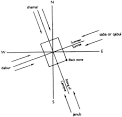
islamic-awareness.org
base of the Kaaba towards
376 × 362 - 28k - jpeg |

forum09.faithfreedom.org
the Kaaba was CLEARLY
568 × 504 - 25k - png |

en.wikipedia.org
A drawing of the Kaaba.
1280 × 853 - 114k - png |
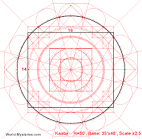
blog.world-mysteries.com
Kaaba 25 REC cube (Height = 43
759 × 743 - 33k - png |

forum09.faithfreedom.org
This image shows the Kaaba
800 × 454 - 1424k - png |

bitacoradegalileo.com
suroriental de la Kaaba,
1680 × 1050 - 69k - png |

wanttherealtruth.com
Kaaba was created 2000
325 × 301 - 22k - png |
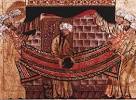
en.wikipedia.org
Kaaba - Wikipedia, the free
626 × 459 - 96k - jpg |
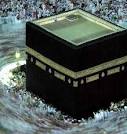
crystalinks.com
Pilgrims touching one of the
546 × 576 - 57k - jpg |

fr.wikipedia.org
Canopus α Carinae
2000 × 1311 - 1223k - jpg |
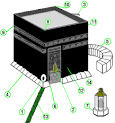
en.wikipedia.org
Kaaba - Wikipedia, the free
356 × 381 - 34k - png |

en.wikipedia.org
with visits to the Kaaba
566 × 396 - 118k - jpg |
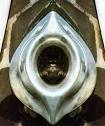
redicecreations.com
The Black Stone of Ka'aba
360 × 432 - 40k - jpg |

philipcoppens.com
The Canopus Revelation
197 × 277 - 24k - jpg |

mysteryoftheiniquity.com
God the Mother, p. 265).
441 × 478 - 50k - jpg |

ayfo.net
"Piedra Negra de la Kaaba"
211 × 239 - 10k - jpeg |

grahamhancock.com
brightest stars.
800 × 412 - 100k - jpg |
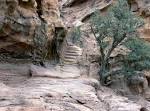
maraustralis.com
orientado hacia Canopus,
1600 × 1179 - 953k - jpg |

bibliotecapleyades.net
the geographical Canopus)
333 × 617 - 24k - jpg |

caravanserai-magazine....
The orientation of the Ka'aba.
436 × 297 - 8k - gif |
|
|
|
|
|
Argo Navis
De Wikipedia, la enciclopedia libre
Argo Navis fue (y, en cierto sentido, sigue siendo) una extensa constelación en el hemisferio sur celeste que representaba el navío en que viajaron Jasón y los Argonautas de la mitología griega: Argo. Ésta es la única constelación descrita por Claudio Ptolomeo que no se reconoce en la actualidad. Por su gran tamaño (unos 1.884 grados cuadrados, más que ninguna otra), fue dividida en varias constelaciones menores por Nicolas-Louis de Lacaille en el siglo XVIII: estas son Carina (la Quilla), Puppis (la Popa), Vela (la Vela). Esta última ocupa el lugar que correspondería al mástil de la nave.
Estrellas importantes de Argo Navis[editar]

Argo Navis de Johann Bayer.
Argo Navis fue dividida por Lacaille muchos años después de que Johann Bayer le aplicara su sistema de nombrar las estrellas, en nuestros días continúa usándose su secuencia, aun cuando ya no se reconoce como una constelación. Es decir, Vela, Puppis y Carina, las constelaciones derivadas de este extenso asterismo, comparten una misma denominación de Bayer. Es por ello que tanto Vela como Puppis carecen de estrellas alfa y beta porque Alfa (α) y Beta (β) Argus Navis corresponden hoy a Alfa y Beta Carinae. Carina, por su parte, carece de estrella gamma porque Gamma (γ) Argus Navis hoy corresponde a Gamma Velorum (perteneciente a Vela). Y así sucesivamente. La leyenda cuenta que la Proa del navío causó la muerte de su antiguo capitán, Jasón al pudrirse y caerle encima cuando el barco era venerado en Corinto, ciudad de la que Jasón era el rey. Por eso en la constelación sólo se representó la popa, la vela, y la quilla, pero la proa no.
Pyxis, a diferencia de las otras tres, tiene estrellas con designación alfa, beta, gamma y demás, aun cuando sus estrellas pertenecieron antiguamente a la misma constelación de Argo Navis. Esto se debe a que, en tiempos de Bayer, las estrellas que ahora delínean a Pyxis —todas de poca brillantez— no se contaban entre las que trazaban la figura del navío. Cuando Lacaille la crea en 1756 es, entonces, que sus estrellas reciben la designación correspondiente.
Véase también[editar]
http://es.wikipedia.org/wiki/Argo_Navis
|
|
|
|
|
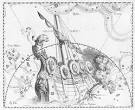
en.wikipedia.org
Argo Navis
601 × 488 - 78k - jpg |
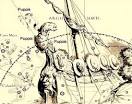
constellationsofwords.com
Argo Navis. Jason's Ship
528 × 417 - 101k - jpg |
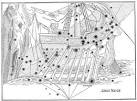
argonauts-book.com
Argo Navis, after Bayer's Star
649 × 479 - 155k - jpg |
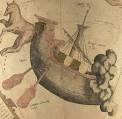
argonauts-book.com
Argo Navis by Mercator,
371 × 362 - 37k - jpg |
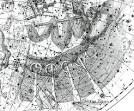
ianridpath.com
Argo.JPG
568 × 472 - 103k - jpg |

constellationsofwords.com
Argo Navis
352 × 284 - 60k - jpg |
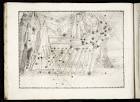
es.wikipedia.org
de Argo Navis[editar]
700 × 510 - 135k - jpg |

pa.msu.edu
Argo Navis is no longer
504 × 336 - 88k - jpg |

onemysteryless.wordpre...
Jason and the Argonauts: The
320 × 218 - 27k - jpg |

argo-navis-photo.net
Jason Fleischer. Picture
250 × 232 - 16k - jpg |

moonmentum.com
El Argo. La historia de Jasón
300 × 228 - 5k - gif |
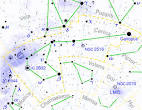
wwu.edu
Argo Navis The Ship (Carina,
771 × 599 - 93k - gif |

carlosnieto.com
Constelación de Argo Navis
386 × 480 - 165k - png |
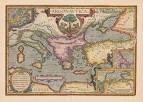
mgrazula.blogspot.com
Argo Navis represents the
800 × 572 - 160k - jpg |

tumblr.com
Argo Navis (or simply Argo) was a large constellation in the southern sky
500 × 425 - 465k - png |

moonmentum.com
constelación Argo Navis.
774 × 529 - 71k - jpg |

artworkoriginals.com
Fritz Wegner: Argo Navis the
250 × 213 - 24k - jpg |

moonmentum.com
Argo Navis fue (y,
300 × 240 - 18k - jpg |
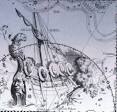
mameh.tripod.com
Argo Navis (la nave veloz) es
315 × 302 - 30k - jpg |

starrynightphotos.com
Argo Navis Constellation
800 × 533 - 76k - jpg |
|
|
|
|
|

astrofotoscolombia.blo...
La Nave de Jasón ( Carina,
400 × 268 - 43k - jpg |

lunarplanner.com
Argo Navis, Canopus and Sirius
500 × 400 - 195k - png |

constellationsofwords.com
Canopus
450 × 621 - 81k - jpg |

ianridpath.com
Argo.JPG
568 × 472 - 103k - jpg |
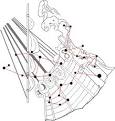
reocities.com
ARGO NAVIS in the sector
339 × 356 - 8k - gif |

argonauts-book.com
Argo Navis, after Bayer's Star
649 × 479 - 155k - jpg |

constellationsofwords.com
Argo Navis. Jason's Ship
528 × 417 - 101k - jpg |
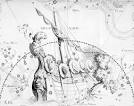
redorbit.com
Topics: Argo Navis
571 × 453 - 127k - jpg |

arsendarnay.blogspot.com
He divided Argo Navis into
1288 × 1600 - 292k - jpg |

astrofotoscolombia.blo...
es Canopus en Carina o la
1600 × 1071 - 249k - jpg |

arsendarnay.blogspot.com
If true, however, Canopus is
399 × 278 - 25k - jpg |

mgrazula.blogspot.com
Argo Navis dominates this
500 × 329 - 191k - jpg |

carlosnieto.com
Argo Navis es una embarcación
564 × 480 - 107k - jpg |

arsendarnay.blogspot.com
Canopus in Argo Navis
480 × 481 - 21k - jpg |
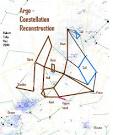
cosmoquest.org
Argo Navis Reconstruction
500 × 599 - 34k - php |

pa.msu.edu
Argo Navis was the ship used
528 × 380 - 52k - jpg |
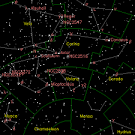
universetoday.com
of Argo Navis.
600 × 600 - 15k - gif |

redorbit.com
Topics: Argo Navis
145 × 88 - 7k - jpg |

constellationsofwords.com
argo. Urania's Mirror 1825
494 × 364 - 88k - jpg |

argonauts-book.com
Argo Navis by Mercator,
371 × 362 - 37k - jpg |
|
|
|
 Primer
Primer
 Anterior
2 a 16 de 31
Següent
Anterior
2 a 16 de 31
Següent Darrer
Darrer
|
|
| |
|
|
©2025 - Gabitos - Tots els drets reservats | |
|
|

